Associate professor Nicolai Topstad Borgen
Faculty of Educational Sciences, Department of Special Needs Education
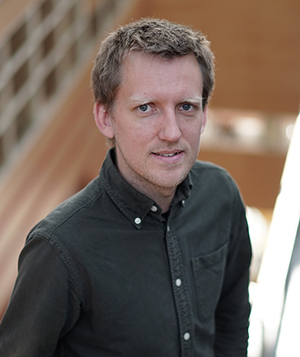
Project: SEGOP: Segregation of Opportunities: Pathways to Marginalization through Neighborhoods and Peers
Summary
Duration: Start date 2024-04-01, End date 2029-03-31
Call: SH3, ERC-2023-StG
Summary: Social and economic exclusion is a major challenge worldwide, attracting substantial research efforts across various disciplines. Yet, research has been largely unsuccessful in providing robust knowledge that can promote inclusion. One key reason is that marginalization is a multifaceted challenge that cannot be tackled within disciplinary boundaries. SEGOP will push the research frontier by integrating perspectives and methods from sociology, psychology, behavioral genetics, and economics. My main objective is to provide nuanced knowledge about how marginalization processes unfold through interactions between family background, individual characteristics, and neighborhood and peer characteristics. With SEGOP, I will lead an interdisciplinary team of researchers. We will leverage uniquely rich population-wide register data linked with large-scale survey data on nuanced developmental mechanisms and outcomes, as well as molecular genetic data. Together we will: 1. Investigate stability and persistence across different aspects of marginalization, and forecast which children and youth will experience persistent long-term marginalization. 2. Discover when, why, and for whom neighborhood and peer processes during childhood and youth lead to marginalization. 3. Uncover whether intergenerational transmission of disadvantage occurs through segregated opportunities. With surging inequality, growing socioeconomic achievement gaps, and increasing neighborhood segregation, there is an urgent need to understand pathways leading to marginalization. My interdisciplinary research profile, broad research background, and expertise in quantitative methods make me uniquely suited to lead this timely project. By integrating fragmented disciplinary perspectives, I have the groundbreaking opportunity to unravel mechanisms leading to marginalization. This knowledge will inform policy with the potential to reduce barriers to inclusion and give all children equal chances to succeed.
Head of group Charlotte Boccara
Faculty of Medicine, Centre for Molecular Medicine Norway

Project: SleepCoG: Map and manipulate sleep oscillations to reveal their role in healthy cognitive development
Summary
Duration: Start date 2024-04-01, End date 2029-03-31
Call: LS4/LS5, ERC-2023-StG
Summary: Sleep is essential to all animal life. But why are sleep needs greater in young mammals? Evidence points to a key role in cognitive development. Sleep correlates with brain immaturity, and sleep dysfunctions are frequent comorbidities of neurodevelopment disorders. As screens invade their bedrooms, children are sleeping less and less, and learning disorders are on the rise. This is a growing public health concern. There is increasing evidence that poor sleep at critical development stages may facilitate the emergence of neural disorders. Yet this is only correlative, but not causal evidence. How does sleep architecture differ in immature brains? Are specific sleep oscillations needed for neural maturation? What type of neural computations do they support? Can sleep dysfunctions directly contribute to social, cognitive or learning impairments? These crucial questions are still largely unanswered due to technical limitations. I propose to harness new concepts and tools from diverse fields of research, to launch an ambitious program bridging neurodevelopment biology, systems neuroscience and sleep research. Because of our interdisciplinary approach, my team is in the unique position to pioneer breakthrough in vivo recordings and optogenetics in rat pups. I plan to record and decode neural activity from multiple brain areas, while automatically scoring sleep in freely behaving pups, this in order to elucidate the computational mechanisms at play during developmental sleep. I will combine high density recordings with recent advances in viral, molecular and CRIPSR tools to 1) Map and 2) Impair sleep – or associated oscillatory mechanisms, with the aim to reveal their 3) Impact on healthy development. My ambition is to set the stage for a new line of research in developmental systems neuroscience. I propose to study the emergence of neural computations, infer their roles across the lifespan, and reveal sleep as a prime target for therapeutics in development disorders
Associate professor Carl Tollef Solberg
Faculty of Medicine, Institute of Health and Society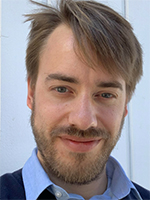
Project: ETHME: The Ethics of Mortality Measurement
Summary
Duration: Start date 2024-04-01, End date 2029-03-31
Call: SH3, ERC-2023-StG
Summary: There are around 55 million deaths in the world each year. How should we evaluate these deaths? Diseases and injuries give rise to both morbidity and mortality. Until the 1950s, epidemiologists were concerned with counting the number of deaths. Since then, evaluative measures concerned with the disvalue of death have grown. In parallel, there has been a debate in analytic philosophy since the 1970s that concerns whether death can harm those who die. The philosophers in this latter debate have not focused on deaths at a population level. In all societies, the demand for health care exceeds the available resources. However, to prioritize scarce resources in a consistent and meaningful manner, we need reliable health measurements to begin with. In society, we use considerable resources to prevent deaths, and the majority of the global disease burden springs from mortality rather than morbidity. Thus, it is remarkable that so few resources are used to provide theoretically robust death measurements. People's attitudes toward death are naturally ambivalent. On the one hand, death is the worst thing that can happen to us. On the other hand, death is nothing to us. Sophisticated methods have been developed to measure morbidity. Such work remains for mortality. There have been almost no cross-fertilizations between epidemiology and philosophy regarding mortality measurement. Accordingly, ETHME announces the ethics of mortality measurement as a novel and developing field within the philosophy of epidemiology. The core objectives of ETHME are to (a) develop and refine the understanding of the nature of the harm of death, (b) reconcile the evaluation of deaths in summary measures of population health with the most promising accounts of the harm of death, and (c) develop a theoretical grounding for evaluating procreation in future individuals. One work package will be devoted to each objective (WP1–WP3).
Postdoctoral fellow Carl Andreas Lindstr?m
Faculty of Mathematics and Natural Sciences, Department of Physics
Project: SPARTA: Staging of Plasma Accelerators for Realizing Timely Applications
Summary
Duration: Start date 2024-01-01, End date 2028-12-31
Call: PE2, ERC-2023-StG
Summary: High-energy physics is headed for an impasse: the next particle collider will cost several billion euros, and while designs have been ready for a decade, they are so expensive that no host country has come forward—a problem that will soon impact progress in the field. Plasma acceleration is a novel technology promising to fix this issue—with accelerating fields 1000 times larger than in conventional machines, the size and cost of future accelerators can be drastically reduced. However, there is a gap between what current plasma accelerators can do and what the next collider requires. Therefore, a recent R&D roadmap (European Strategy for Particle Physics) calls for intensified plasma-accelerator research, as well as an intermediate demonstrator facility. SPARTA tackles two basic problems in plasma acceleration: to reach high energy by connecting multiple accelerator stages without degrading the accelerated beam, and to do so in a stable manner. Access to stable, high-energy electron beams at a fraction of today’s cost will enable ground-breaking advances in strong-field quantum electrodynamics (SFQED), an important near-term experiment that doubles as a demo facility. I have proposed two concepts for overcoming these problems: nonlinear plasma lenses for transport between stages, and a new mechanism for self-stabilization. Can these concepts be realized in practice? Making use of numerical simulations and beam-based experiments at international accelerator labs, this project has 3 objectives: 1. Develop nonlinear plasma lenses experimentally; 2. Investigate self-stabilization, theoretically and experimentally; 3. Design a plasma-accelerator facility for SFQED. Reaching this goal will not only impact high-energy physics, producing advances in SFQED and as a major step toward realizing a collider, but also society at large: applications of high-energy electrons, from bright x-ray beams to advanced cancer treatments, will all become significantly more affordable.
Researcher Norbert Pirk
Faculty of Mathematics and Natural Sciences, Department of Geosciences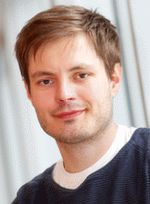
Project: ACTIVATE: Actively learning experimental designs in terrestrial climate science
Summary
Duration: Start date 2024-01-01, End date 2028-12-31
Call: PE10, ERC-2023-StG
Summary: While land-atmosphere exchanges of carbon, water, and energy are key to understanding changes in the Earth system, we still fundamentally lack a methodology to obtain representative estimates of these surface fluxes at the scale of a single grid cell of an Earth System Model (typically 10-100 km), let alone for a wider region. ACTIVATE combines an observing system consisting of a swarm of drones carrying meteorological sensors and gas analyzers, mobile and stationary flux towers, as well as satellites, and fuses their observations with different land-atmosphere models using data assimilation methods. ACTIVATE will develop an adaptive Bayesian Experimental Design framework to generate maximally informative observation strategies for expensive data collection, and adaptively reposition drone swarms during a flight as new observations become available to optimally infer surface fluxes in the landscape. We will demonstrate the framework (i) in idealized synthetic experiments, (ii) at managed and industrial sites with known flux hotspots, and (iii) in targeted high-resolution simulations in poorly represented regions with expensive models that explicitly resolve subgrid-scale processes in Earth System models. We will apply the ACTIVATE framework around existing observatories in vulnerable arctic regions, where the lack of strong observational constraints from state-of-the-art observing systems is particularly apparent and problematic. ACTIVATE will produce: unprecedented observational datasets for new model developments in some of the most data-sparse regions on Earth, uncertainty-aware parameter estimates for critically unconstrained processes, and a pioneering active experimental design framework for terrestrial observing systems. The broader vision of ACTIVATE is to develop active learning capabilities for improved data assimilation in models to elevate our understanding of land-atmosphere interactions across spatio-temporal scales.
Associate professor Alessandro Rippa
Faculty of Social Sciences, Department of Social Anthropology 
Project: AMBER: Amber Worlds: A Geological Anthropology for the Anthropocene
Summary
Duration: Start date 2023-09-01, End date 2028-08-31
Call: SH3, ERC-2022-StG
Summary: The Anthropocene compels us to question established categories and binaries through which we understand the world and act in it: human and nonhuman, life and nonlife, biological and geological. What we still lack is a theoretical framework, methodological and storytelling tools, to analyse environmental and social concerns alongside geological pasts and futures. AMBER addresses this key challenge by drawing scientific understanding of ecological and geological relations into a global ethnography of the extraction and exchange of a unique, emblematic gemstone. Amber is a fossilised resin secreted by plants between 16 and 300 million years ago; it is found across the planet and is one of the earliest recorded items in long-distance trade. Aside from its ornamental value, amber contains prehistoric organic material – leaves, invertebrates, dinosaur fragments. This has generated intense scientific interest, so amber is now studied in palaeontology and geology laboratories to answer fundamental questions about the planet’s biological evolution and previous phases of mass extinction. This project will be the first in-depth, global study of amber across industry, trade, and science. AMBER breaks new ground by bringing together three dimensions in a common analysis: anthropological frameworks of global circulations; the political ecology of resource extraction; and non-humanist approaches to scientific research and ethics of care beyond the human. Rooted in anthropology, the project considers the multiple and entangled worlds of amber: its extractive economies in the war-torn forests of Kachin state; its scientific study in laboratories in China and Europe; and its wholesale trade in Santo Domingo, Kaliningrad and the Baltic states, and China. The project examines their intersections through collaborative and comparative research and will thus lay the conceptual groundwork for a new geological anthropology for the Anthropocene.
Researcher Helene Kn?velsrud
Faculty of Medicine, Institute of Clinical Medicine 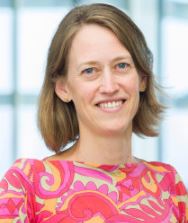
Project: FINALphagy: Final act of the autophagy symphony: Whole-organism orchestration of autophagy termination
Summary
Duration: Start date 2023-01-01, End date 2027-12-31
Call: SL3, ERC-2021-StG
Summary: When an organism experiences physiological stresses, such as nutrient starvation, it activates several mechanisms to promote its survival. One of these mechanisms is autophagy, which is a catabolic pathway conserved from yeast to man that functions as a recycling system during normal physiology, and which helps provide nutrients to sustain essential cellular processes during starvation. Although autophagy is an intensively studied process that plays a major role both in normal development and in a wide variety of diseases, several important aspects of autophagy remain to be elucidated. For instance, whereas the vast majority of studies have focused on how cells regulate the activation of autophagy, it remains largely unknown how cells and organisms shut off autophagy in response to returning nutrient availability. The limited knowledge of autophagy termination is partly due to a lack of available tools and appropriate methods. Addressing these challenges will not only provide important insight in this fundamental aspect of the autophagic process, but may potentially also identify new targets for development of drugs to manipulate this phase of autophagy. In FINALphagy I will develop new genetic and computational tools to quantify and manipulate the temporal dynamics of autophagy in an entire organism. I will unravel key mechanism of autophagy termination in individual cells within a tissue and dissect how this connects to systemic signaling and behavioral changes. This will generate a comprehensive toolbox for time- and space-resolved manipulation and quantification of autophagy levels, produce a whole-organism map of autophagy responses at the tissue-level, and conceptualize our understanding of the dynamics of autophagy regulation in an entire organism during changing nutrient levels.
Professor Lotte Thomsen
Faculty of Social Sciences, Department of Psychology
Project: COORDINATE: Which building blocks for coordinating resource distribution are so basic that they manifest even in infancy?
Summary
Duration: Start date 2022-07-01, End date 2027-06-30
Call: SH3, ERC-2021-StG
Summary: COORDINATE will do political psychology with infants to reveal meaningful mechanisms for coordinating resource distribution so basic that they manifest even in the preverbal mind. The distribution of resources, help, territory and priority decision rights are central dilemmas for group-living species and the core of politics. Navigating these dilemmas, young children must discover the structure of their social world: who is friend or foe, superior or subordinate, and what does this mean for how people interact? To solve this learnability problem, I argue that early- and reliably-developing core representations and motives have evolved for navigating basic kinds of social relationships with critical adaptive value. Consistent with this theoretical proposal, I discovered that preverbal human infants mentally represent social dominance and, like other animals, use relative size to predict the outcome of zero-sum conflict, spawning a new field of research (Thomsen et al, 2011, Science). However, human society is also defined by reciprocity and by distributing resources according to need, effort and prior possession, yet it remains unknown if these coordination mechanism are inscribed already in the preverbal mind. Here, we test the high-risk proposals that 1) preverbal infants expect direct reciprocity to govern resource donations; 2) infants and preschoolers use gratitude to predict the future reciprocal altruism of others; 3) infants also use asymmetries of prior possession, hunger need and relative effort to predict who will prevail in resource conflict; 4) that beyond the dyadic and triadic relationships typically studied in the field, preschoolers and preverbal infants use the abstract structural forms of pyramidal hierarchy, clique and lines to represent the group relationships of social hierarchy, communality and equality, respectively. These mechanisms likely operate intuitively across life and so we will test if they undergird political ideology and -psychology.
Postdoctoral fellow Marius Buning
Faculty of Humanities, Department of Archeology, Conservation and History
Project: BE4COPY: Before Copyright: Printing Privileges and the Politics of Knowledge in Early Modern Europe
Summary
Duration: Start date 2022-09-01, End date 2027-08-31
Call: SH6, ERC-2021-StG
Summary: BE4COPY examines the long-term history of printing privileges from a cross-disciplinary and European perspective. These privileges provided exclusive rights for the production of books and images: they can be considered one of the precursors of what we now call ‘copyrights’. Introduced around 1470, shortly after the invention of the printing press, privileges were abolished around 1789, when new notions of ownership emerged alongside new ideas about political representation. The BE4COPY project studies the changing nature of the printing privilege over the course of these turbulent 300 years. The intimate relationship between legal frameworks and the politics of knowledge is the primary focus of the project. Although numerous studies have examined printing privileges in their local context, there are to date no historical studies that have examined how different European systems of printing privileges were interrelated. BE4COPY will change that and thus contribute to a better understanding of the origins of copyrights as a specific form of shared European heritage. It does so by (1) examining the distribution of printing privileges on a European scale, exposing existing trade routes and political alliances, and (2) rethinking the relationship between legal protection and political interests. How did shifting discourses of expertise and stewardship influence the proprietorship of intellectual creations’ How did the interplay between law, economy, and politics shape the production of knowledge? And how did ‘authorship’ and ‘ownership’ eventually emerge in that context as twin categories? BE4COPY employs an innovative archive-based approach centred around the cross-cutting themes of ‘Censorship and Promotion’, ‘Travelling Ideas and People’, and ‘Authorship and Readership’. The project adds a new layer to our evolving understanding of copyright and opens up new perspectives regarding the question of how knowledge was produced and shared in early modern Europe.
Associate professor Manudeep Bhuller
Faculty of Social Sciences, Department of Economics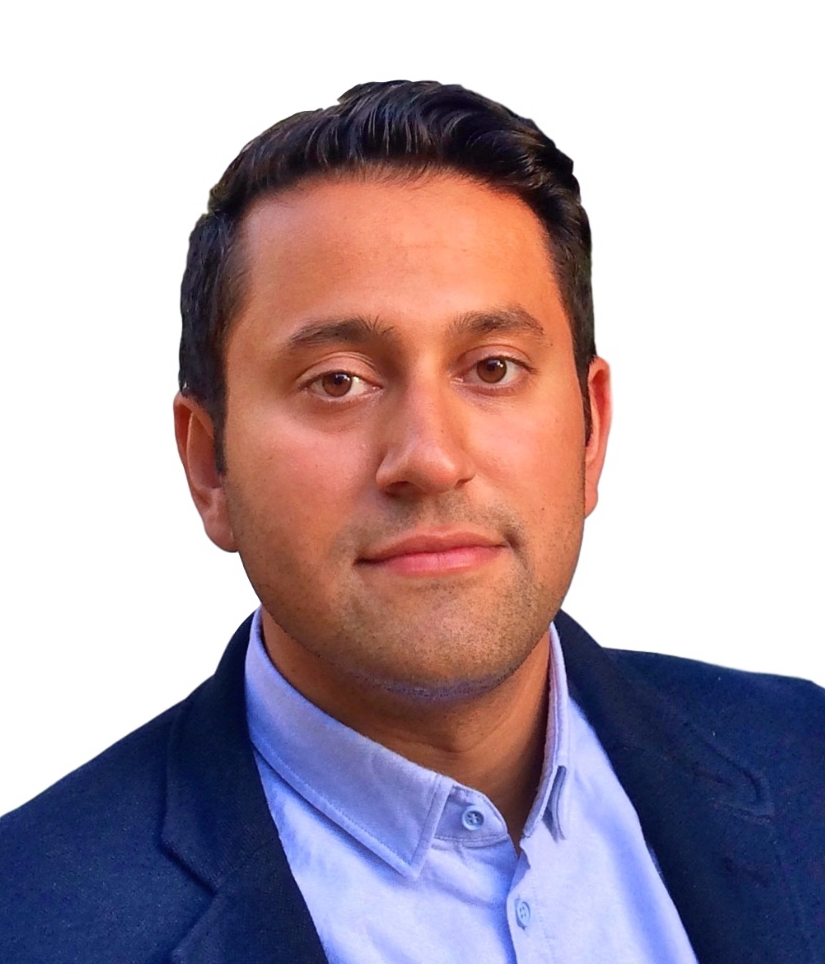
Project: LABFLEX: Causes and Consequences of Labor Market Flexibility
Summary
Duration: Start date 2022-12-01, End date 2027-11-30
Call: SH1, ERC-2021-StG
Summary: Globalization and technological change have transformed the workplace and the organization of labor. At the core of these major developments is the degree of flexibility in the labor market. Alternative work arrangements, e.g., outsourcing, sub-contracting, flexible scheduling, and flexible pay jobs have become a common feature of labor markets across the globe. While most economists would argue that labor market flexibility facilitates reaping the benefits of globalization and technology growth, these developments can have far reaching consequences for the division of resources in society. Indeed, the recent decades have witnessed a sharp rise in wage inequality. LABFLEX is motivated by these developments and seeks to investigate the causes and consequences of labor market flexibility. LABFLEX raises a series of questions: Do differences in job contracts reflect shifts in worker preferences, or do they mirror advances in technology that facilitate gains from organizing job tasks differently? What are the impacts of flexibility in job contracts on wage inequality and gender wage gaps? Are workers being compensated for the adverse work conditions or the higher income risks, or do changes in job contracts reflect changes in the sharing of rents between workers and firms? How do labor market institutions affect flexibility? And what is the role of labor market policies? To answer these questions, LABFLEX will for the first-time link register data to large-scale experimental evidence on workers’ stated preferences for a wide array of work and pay arrangements, and an exhaustive full-text corpus of vacancies with information on job attributes. This will allow drawing a very detailed picture of both the supply and the demand side of the labor market, facilitating a study of flexibility in job contracts. Combining these data with experimental and structural methods, LABFLEX will provide new evidence on the causes and consequences of labor market flexibility.
Johanne Jacobsen
Faculty of Medicine, Institute of Basic Medical Science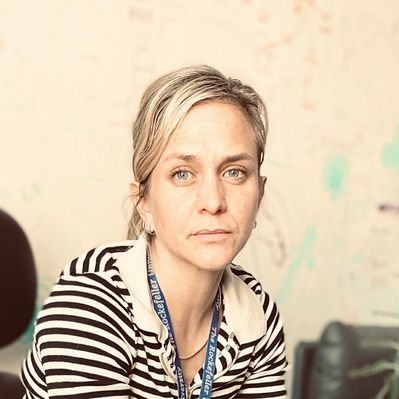
Project: GC T Subsets: T cell subsets underlying the rise, fall and recall of the Germinal Center
Summary
Duration: Start date 2022-09-01, End date 2027-08-31
Call: LS6, ERC-2021-StG
Summary: Follicular helper T cells (Tfh), through their cognate interactions with B cells, drive the Germinal Center (GC) reaction resulting in affinity matured memory B cells and Plasma cells, hallmarks of the adaptive immunity and underpinning our ability to counter pathogenic insults. For mounting a successful response against most pathogens, including the virus SarS-CoV-2 that has crippled most nations for over a year, Tfh cells are of central importance. Aberrant activation of Tfh has also been implicated in many diseases, including Multiple Sclerosis, Diabetes and Lymphoma. Understanding Tfh biology is essential for our understanding of the adaptive immune system and in our quest to develop better vaccines and therapeutic treatments, as it will enable us to modulate GC output. Through work over multiple years, the applicant has developed an understanding for Tfh as a highly dynamic population that require equally dynamic regulation. Understanding the true nature of Tfh, and of the T cell subsets that regulate Tfh, including the molecular mechanisms of regulation, will necessitate the combination of new tools with already existing state-of-the-art methods that is proposed herein. This will lead to a new understanding of how Tfh drive B cells throughout the GC, how they shape B cell responses, shedding light on unresolved issues such as how different quality of memory B cells is formed, and how the unappreciated phenomenon of GC termination, proceeds. Specifically this proposal will result in 1) A new definition of Tfh and of GC T cell regulatory subsets. 2) A mechanism for Foxp3+ T cell mediated regulation of GC B Cells and GC termination and 3) A new understanding of the origin and quality of Tfh memory and associated GC T cell memory.
Associate professor Eivind Andreas Baste Undheim
Faculty of Mathematics and Natural Sciences, Centre for Ecological and Evolutionary Synthesis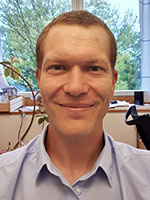
Project: VenomEvolvability: Lacewing venom: Linking the molecular and phenotypic evolution of adaptive traits
Summary
Duration: Start date 2022-03-01, End date 2027-02-28
Call: LS8, ERC-2021-StG
Summary: Understanding the ability of species to adapt to their environment, or their evolvability, is central to evolutionary biology. Most traits are complex in that their phenotype results from the contributions of many genes with small, sometimes non-additive effects. While quantitative genetics has been instrumental in showing that short term evolvability depends on additive genetic variation, it ignores details of the molecular underpinnings of phenotypic characters that are crucial for the production and maintenance of additive genetic variation, and therefore evolvability at longer time scale. This impacts our understanding of evolvability and calls for model traits that enable the integration of quantitative and molecular genetics. Venoms are great model systems for this purpose. They are convergent sets of traits well-suited for comparative studies, and their phenotypes result from the combined actions of a relatively small number of secreted, functionally repurposed proteins, or toxins, that can be identified, characterised, and quantified. This project focuses on the venoms of Neuroptera, which venoms remain unstudied despite providing a unique opportunity among venomous animals to combine omics techniques, and comparative molecular and morphological evolution with evolutionary quantitative genetics. This multidisciplinary approach will elucidate the genetic and evolutionary mechanisms that underlie the emergence of venoms as complex evolutionary novelties and identify the molecular properties that facilitate or constrain their evolution across micro- and macroevolutionary timescales. Thus, the project will test central hypotheses about venom evolvability, but it is also likely to yield novel bioactive molecules with potential use as molecular tools and agrochemical leads. It will also establish venom as model systems that enable integration of quantitative and molecular genetics, thereby addressing a major methodological challenge in evolutionary biology.
Researcher Andre Laestadius
Applied with the Faculty of Mathematics and Natural Sciences, Department of Chemistry, has since moved the grant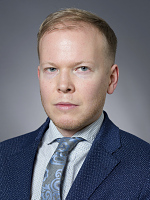
Project: REGAL: Regularized Density-Functional Analysis
Summary
Duration: Start date 2022-09-01, End date 2027-08-31
Call: PE4, ERC-2021-StG
Summary: The Kohn-Sham approach of density-functional theory (DFT) is the most widely used method in quantum chemistry and its usefulness as a practical tool can hardly be overestimated. The central object is the universal density functional. However, this density functional is nondifferentiable, leaving many practical aspects of the theory unfounded. Nevertheless, extensive work has been done establishing exact conditions for the density functional, constituting one of the cornerstones of functional development. The aim of the proposal is to apply a generalization of the Moreau-Yosida regularization to DFT. This achieves not only differentiability, but also mitigates the problem of potential-representability and provides global solutions of the underlying variational problem. This unconventional approach may have transformative impact on the development of approximate functionals as well as the iterative Kohn-Sham scheme. The first objective is to establish the mathematical foundation of a regularized DFT, akin to the unregularized setting of standard DFT. Close interplay between different theories that use more than just the particle density as variables will be a guide for the regularized theory. Equipped with a regularized formulation, the aim of the second objective is to develop new and understand existing exact constraints for the density functional. This intends to open up a whole new axis of method development for approximate functionals. Since the regularization transformation considered is lossless, REGAL opens up for a new theoretical bridge between formal DFT and density-functional approximations. The third objective is the study of the regularized Kohn-Sham iteration scheme. Here a proof of guaranteed convergence is the ultimate aim. Furthermore, regularization effects to speed up convergence using bounds on the energy curvature will be studied.
Postdoctoral fellow Mareile Kaufmann
Faculty of Law, Department of Criminology and Sociology of Law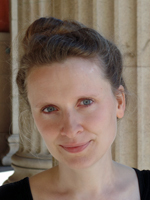
Project: Digital DNA: The changing relationships between digital technologies, DNA and evidence
Summary
Duration: Start date 2021-05-01, End date 2025-04-30
Call: SH3, ERC-2020-StG
Summary: The relationship between digital technologies, DNA and evidence is changing so rapidly and profoundly that in-depth and creative analyses of the links between them are urgently needed. Digital innovations within forensic DNA analysis affect the making of DNA evidence. For example, new computer programs create identikit pictures from DNA. At the same time, DNA and evidence-based reasoning also change digital technologies, for example when DNA is used as a storage medium for digital data. Digital DNA provides pioneering empirical insights and theorization on the reciprocal influence of digital technologies, DNA and evidence. The project defines an emerging field: the digitization of forensic biology and the influence of the biosciences on digital technologies. It provides systematic interdisciplinary studies on three sets of developments. 1. Changes in hardware. It investigates how smaller and more mobile hardware influences the production of DNA evidence, and how DNA is used as hardware in computing. 2. Changes in databases and analytic instruments. It studies how a growth in DNA databases and their algorithmic analysis influence the production of DNA evidence, and to what extent digital databases and algorithms are associated with evidence-based reasoning. 3. Changes in information per se. It discusses how the ability to alter DNA influences the production of forensic evidence, and how DNA influences the concept of digital data. Current debates tend to focus on ethical, legal and societal aspects of forensic innovation or on the roles that big data and algorithms play in society. Digital DNA focuses on more fundamental developments: how DNA evidence changes when it is integrated with digital technologies, and the re-orientation that digital data and technologies undergo when they are integrated with biology. A unique combination of methods from the social sciences, information studies and natural sciences is used in the project.
Associate professor Alejandra Mancilla
Faculty of Humanities, Department of Philosophy, Classics, History of Art and Ideas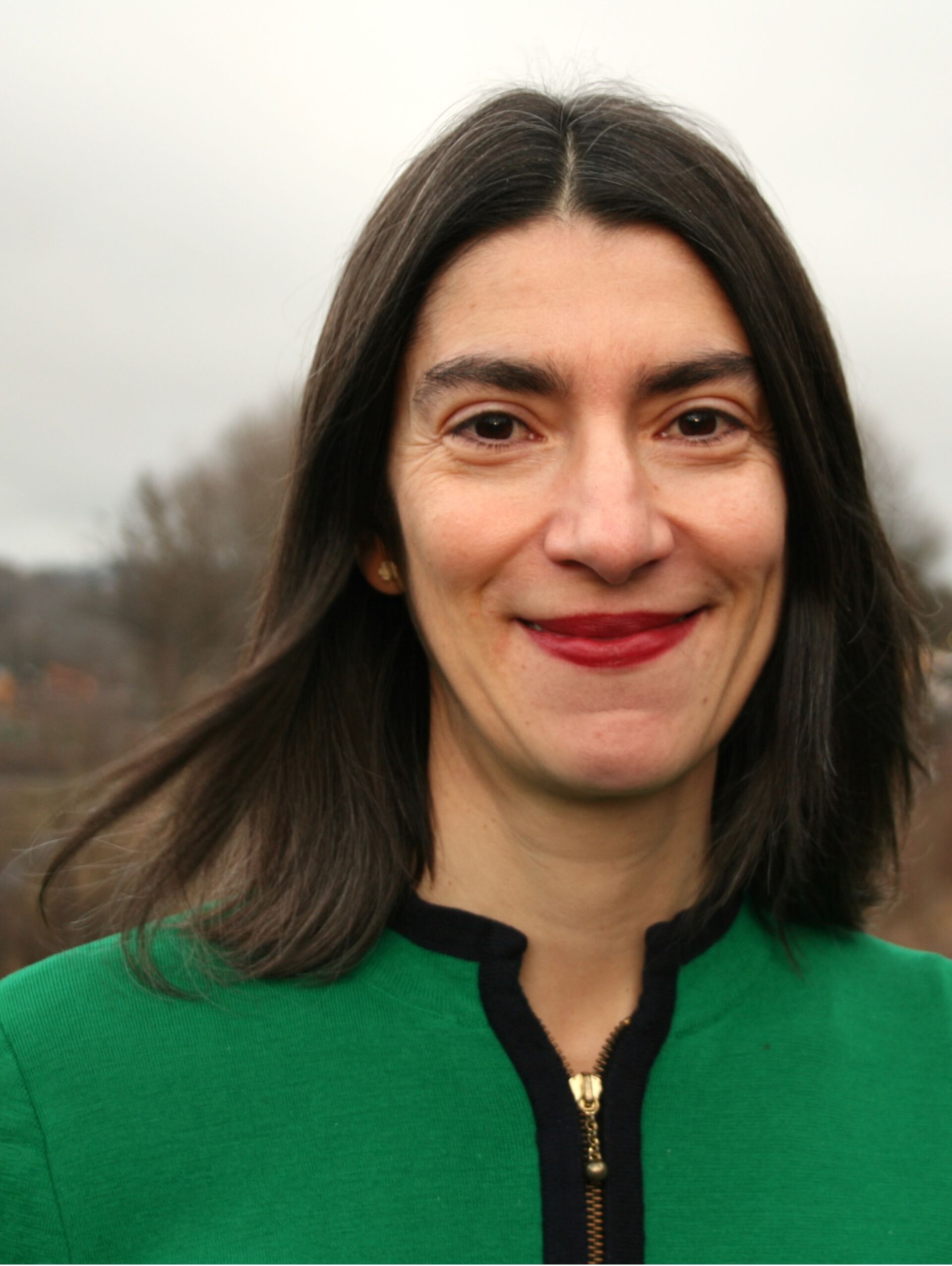
Project: DynamiTE: Dynamic Territory: A Normative Framework for Territory in the Post-Holocene
Summary
Duration: Start date 2021-01-01, End date 2025-12-31
Call: SH5, ERC-2020-StG
Summary: Climate change will disrupt current political, societal and economic paradigms. What should a just territorial arrangement be for countries that will partially or totally disappear due to sea level rise, or whose main productive activities—like farming— will be lost due to changed weather patterns? How to think of “locals” and “migrants” in a world where climate refugees are estimated to reach up to one billion by 2050? How should Global Systemic Resources (GSRs), like rainforests, be governed to guarantee their maintenance? In a post-Holocene world where sea level rise, desertification, droughts, crop failure, water shortage, floods and extreme weather events will become the norm, we need normative criteria to solve conflicts of interest regarding the use of land and natural resources. DynamiTE aims to provide those criteria, developing a novel framework for territory on a global scale, reassessing the traditional rights and duties associated with it. While current normative theories of territory (NTTs) rely on Late Holocene assumptions (stable and predictable climate, geography and demographics), DynamiTE theorizes territory amidst instability and unpredictability. While current NTTs draw their main normative assumptions from the Western liberal canon—e.g., that property rights over land and natural resources secure justice—DynamiTE questions their adequacy now and in the future. DynamiTE conceptualizes territory and territorial agency as dynamic, with shifting boundaries and shifting memberships that reflect this new complexity. It proposes moreover a dynamic, interdisciplinary methodology that integrates environmental studies, geography and international law into political philosophy. Examining three transversal themes (people in flux, distribution of land and resource use, and governance of GSRs), DynamiTE aims to be the first truly interdisciplinary NTT and to open a new field of research on normative questions surrounding territory in a changing world.
Researcher Kjetil Lysne Voje
Faculty of Mathematics and Natural Sciences, Centre for Ecological and Evolutionary Synthesis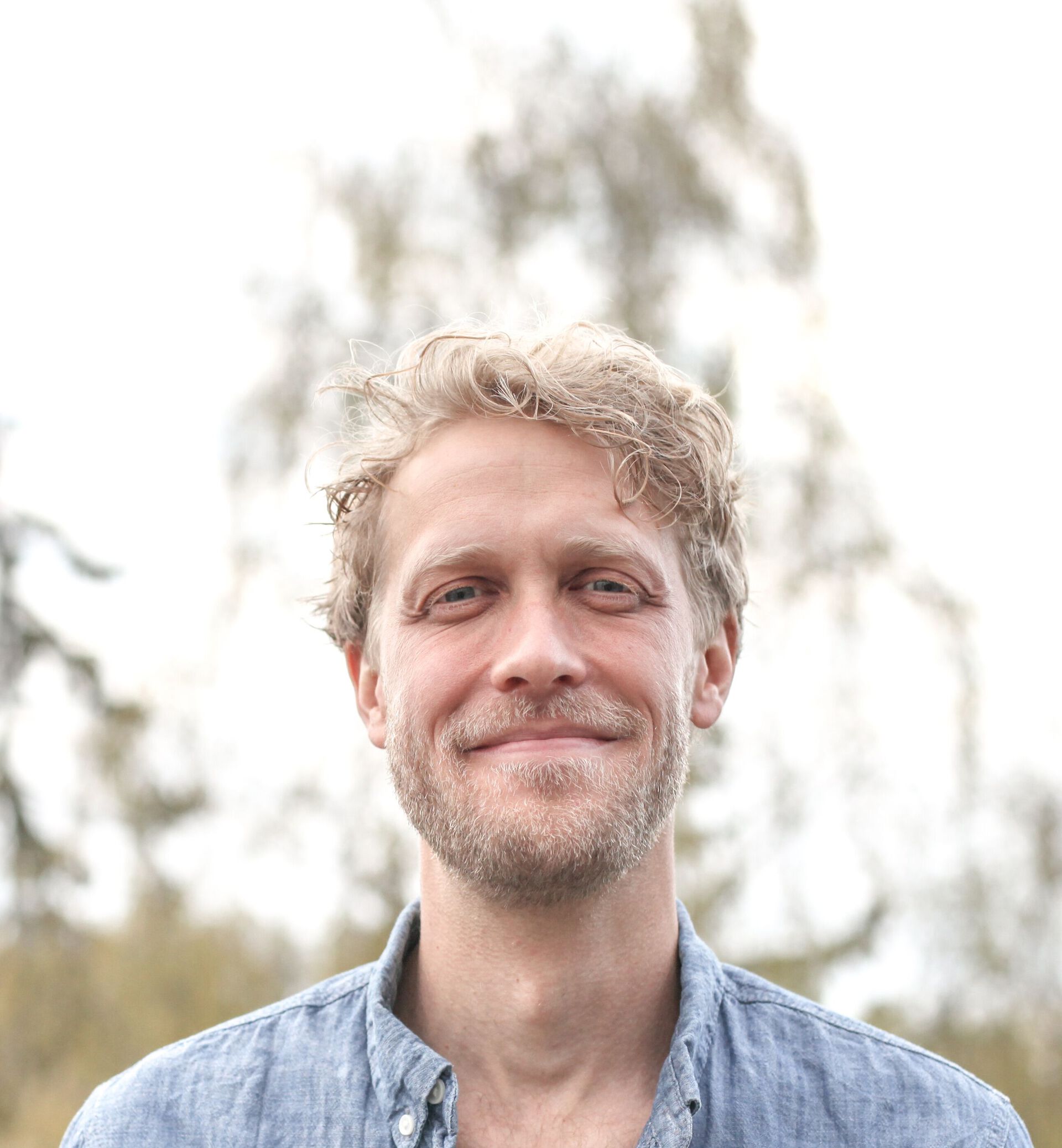
Project: ROCKS-PARADOX: Dissecting the paradox of stasis in evolutionary biology
Summary
Duration: Start date 2021-01-01, End date 2025-12-31
Call: LS8, ERC-2020-StG
Summary: There is something deeply disconcerting about the current state of knowledge on rates of morphological evolution across different timescales: Why do most species in the fossil record exhibit negligible morphological change when contemporary populations often respond rapidly to selection? The ROCKS-PARADOX project will address this fundamental question – known as the paradox of stasis – along mutually reinforcing lines of enquiry, by merging theory and data across paleontology and evolutionary biology. The prevalence of stasis and other patterns of change are hard to evaluate without knowledge of evolution on timescales unattainable by studies of contemporary populations (microevolution) and comparative species-data (macroevolution). The ROCKS-PARADOX project will address this by analyzing the world’s largest collection of data on within-lineage evolution – spanning decadal to million-year timescales – using a statistical framework (developed by the project) where new and already established mathematical models of evolution are implemented. The ROCKS-PARADOX project also will conduct an unprecedented assessment of the effects of genetic constraints and evolvability on evolution beyond microevolutionary timescales. To do this, we will break new ground by estimating quantitative genetic parameters from fossil samples using machine-learning algorithms on a collection of 150,000 fossil clonal organisms (bryozoans) from a rich and highly-resolved stratigraphic section spanning 2.3 million years. The ROCKS-PARADOX project will bridge our current understanding of phenotypic evolution across timescales into a single cohesive theoretical framework, and open up new avenues for how fossil data can be collected and analyzed to inform questions within evolutionary biology. The project will develop new methodology with broad applications, including long-awaited tools for high-throughput phenotyping.
Associate professor Jana Krause
Faculty of Social Sciences, Department of Political Science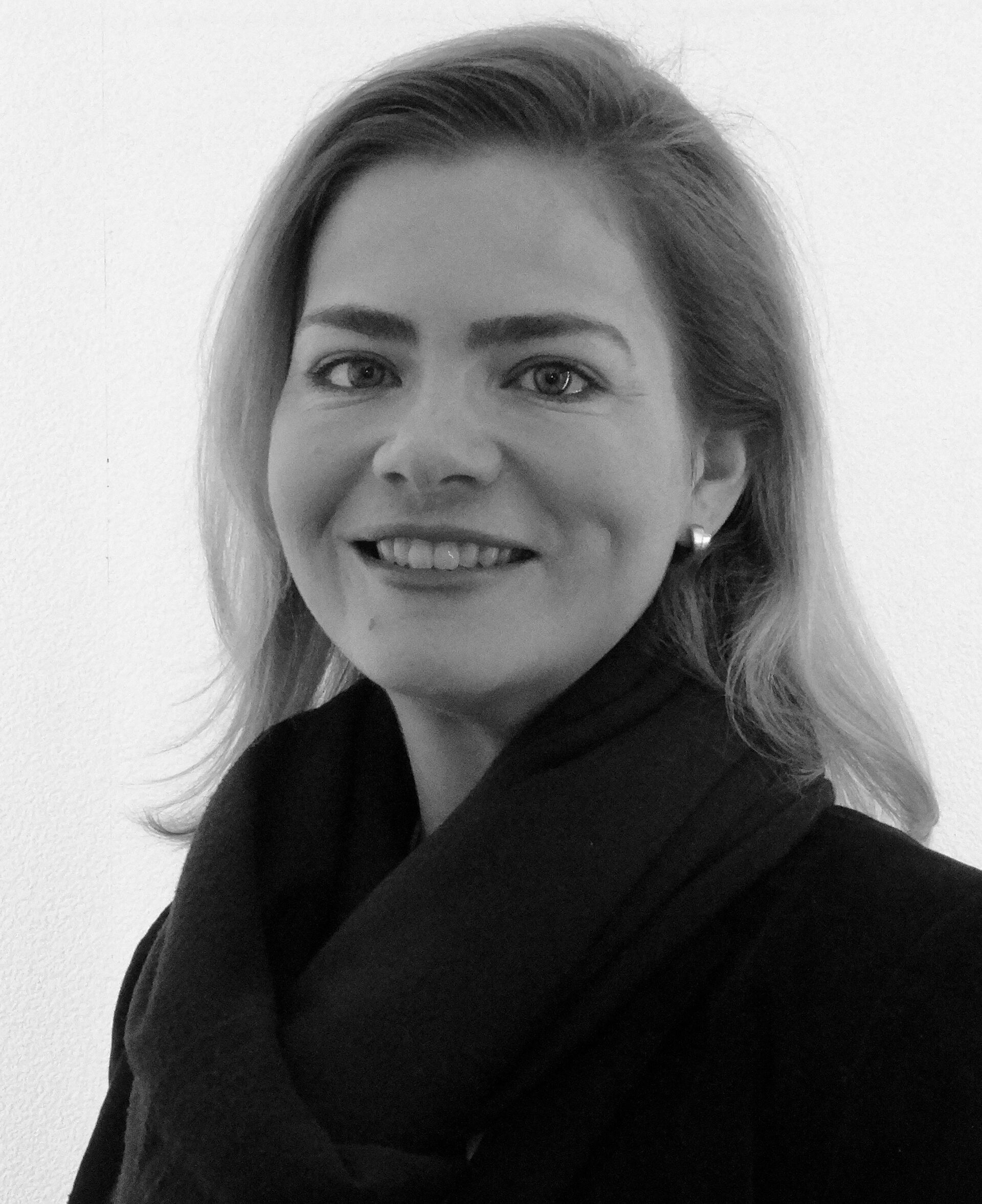
Project: ResilienceBuilding: Social Resilience, Gendered Dynamics, and Local Peace in Protracted Conflicts
Summary
Duration: Start date 2020-10-01, End date 2025-09-30
Call: SH2, ERC-2019-StG
Summary: How can ‘resilient communities’ remain resilient in protracted conflicts and contribute to sustainable peace rather than to increased vulnerability to renewed conflict? How do local conflicts link to national conflicts and what are the implications for peacebuilding? What are the gender dimensions of social resilience? Is resilience always ‘a good thing’ or may it impede conflict resolution? This project pioneers an interdisciplinary research agenda into resilience building. The need for a greater analytical focus on the causes and consequences of social resilience is evident in the modest international record of peacebuilding and civilian protection. Scholarship increasingly invokes resilience terminology but lacks mature conceptual and empirical work. Building on the PI’s expertise in social resilience, communal conflict, and gender and peacebuilding, this project will establish an empirically-grounded research agenda on social resilience and sustainable peace. By providing a comparative analysis of resilience building and barriers to peace in Nigeria, South Sudan, the Central African Republic (CAR) and Kenya, the project will create a new agenda for resilience research that rests on novel conceptual development and interdisciplinary approaches to resilience combined with the systematic study of social resilience and local peace produced by an integrated team of specialist researchers. The project will involve a fieldwork-based multi-method research design that combines advanced quantitative techniques for assessing the consequences of international peacebuilding with regard to local peace and women’s empowerment with context-sensitive qualitative analysis of the often unintended consequences of social resilience and hidden barriers to local peace and changing gender relations. The project will result in a new scholarly community with a shared intellectual focus on social resilience and sustainable peace in protracted conflicts
Associate professor Ingrid Lossius Falkum
Faculty of Humanities, Department of Philosophy, Classics, History of Art and I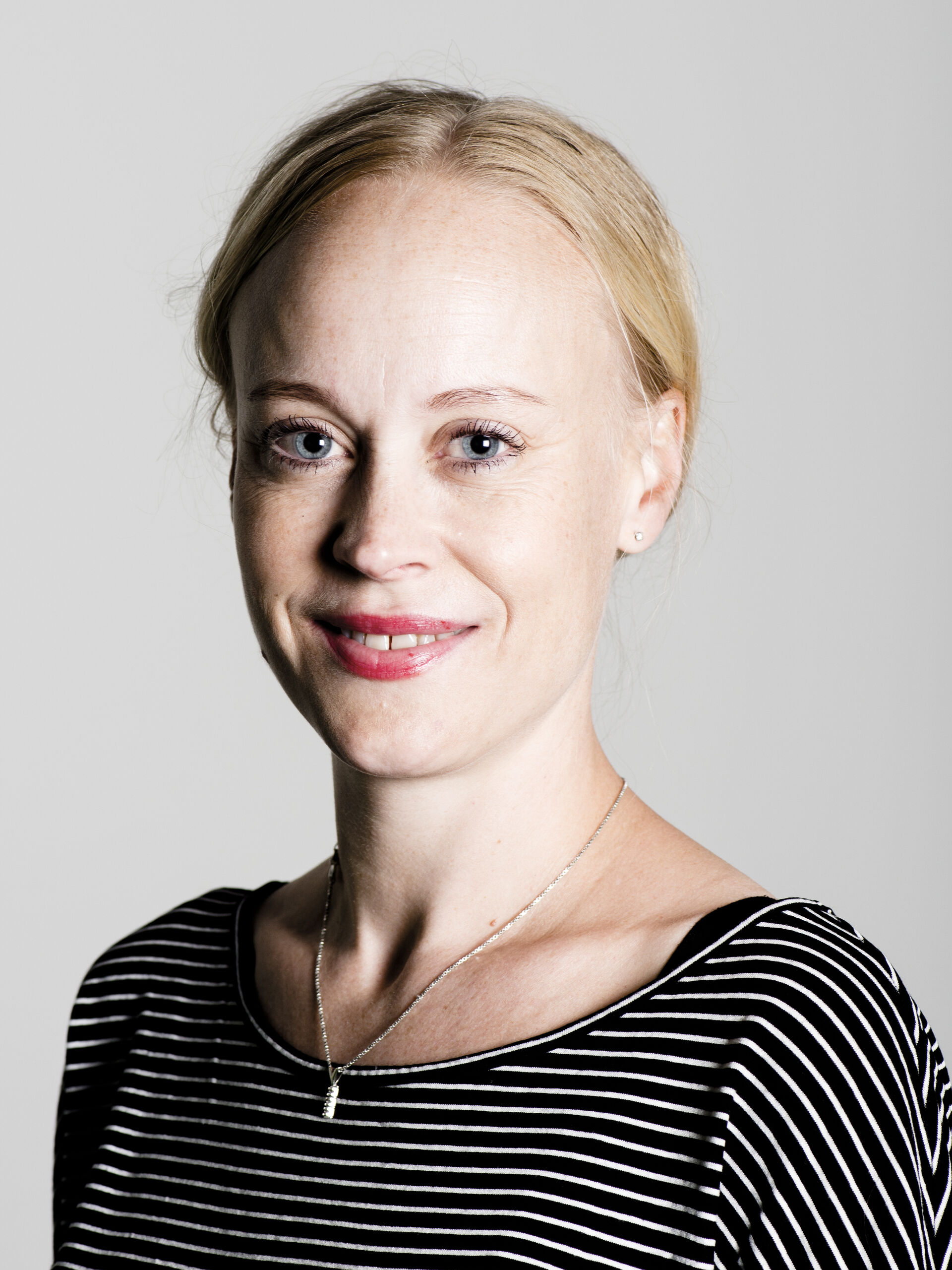 deas and Department of Linguistics and Scandinavian Studies
deas and Department of Linguistics and Scandinavian Studies
Project: DEVCOM: The Developing Communicator: Pragmatics, Sense Conventions and Non-Literal Uses of Language
Summary
Duration: Start date 2020-07-01, End date 2025-06-30
Call: SH4, ERC-2019-StG
Summary: Children are born communicators. A growing body of developmental evidence suggests that the cognitive abilities enabling the expression and comprehension of communicative intentions – so-called pragmatic abilities – which underlie language use and understanding, develop early. However, a puzzling feature of pragmatic development is young children’s difficulties with non-literal uses of language (e.g., “I love you so much I could eat you up!”). How can children be early experts at a range of pragmatically complex tasks requiring attention to speakers’ intentions, but act like ‘literal listeners’ in other contexts? The objective of DEVCOM is to provide an account of the stages and factors involved in children’s developing competence with non-literal uses of language. The project will investigate the novel hypothesis that children’s growingsensitivity to sense conventions, which determine the publicly accepted meaning of words in their language, impedes
children’s pragmatic reasoning with non-literal uses in the pre-school years. The empirical data will be gleaned from experimental studies with typically developing children aged 2-7 years, focusing on lexical innovation, lexical modulation, and figurative language, each highlighting the interaction of pragmatic reasoning with sensitivity to sense conventions in a
distinct way. Further, the project will investigate whether the persistent difficulties with non-literal uses faced by children with Autism Spectrum Disorder may be linked to the same source. The project will use a set of novel methodologies combining explicit and implicit measures, assuming that while children’s performance on explicit measures is liable to be affected by a growing sensitivity to sense conventions, implicit measures may be more revealing of their actual pragmatic abilities. The empirical results will provide input to a novel theoretical account of pragmatic development that resolves the developmental puzzle of non-literal uses of language.
Associate professor Elisabeth Schober
Faculty of Social Sciences, Department of Social Anthropology
Project: PORTS: Between Sea and City: Ethnographic explorations of infrastructure, work, and place around leading urban container ports
Summary
Duration: Start date 2020-02-01, End date 2025-01-31
Call: SH3, ERC-2019-StG
Summary: How to study the turbulent transitions and risky mobilities of global capitalism today? An illuminating, but often overlooked site that lends itself to explorations into the changing nature of our economic system can be found at the interface between sea and city, i.e. at the port. Container ports have often been pushed to the edges of the urban spaces that they used to be centrally located in. A study on the city/sea-nexus will illuminate the dynamics behind the ways in which the center of global capitalism is currently on the move east-wards. This is not a uni-linear shift from “the West” to “the Rest”, but rather, is brought into existence by the nature of the ever-changing interplay between local territorialization and global connectedness. By investigating the relationship between port and city, PORTS will achieve three objectives: 1. to uncover the daily practices that port-related infrastructures enable in order to ensure the flow of commodities travelling through them; 2. to document the
ways in which workers employed in the orbit of the port are affected by, and relate to, race-to-the-bottom-dynamics within the maritime world; and 3. to analyze the gradual move of the port away from the city center, and the urban waterfront changes that come with it, and how these are experienced, discussed, and justified by various stake-holders. PORTS will engage with local histories, unruly presents, and possible futures in four of the most important port-cities in the world: Singapore, Pusan (Korea), Rotterdam (Netherlands) and Piraeus Greece). Through ethnographic work, it will clarify the changing nature of work, the significance of “place” as a site of accumulation and resistance, and the role of infrastructure for the inner workings of ports. Given the dearth of work addressing logistics-driven capitalism from an urban angle, this is the first study that systematically utilizes the ethnographic tool-kit to explore the economic frontier between city and sea.
Researcher Are Skeie Hermansen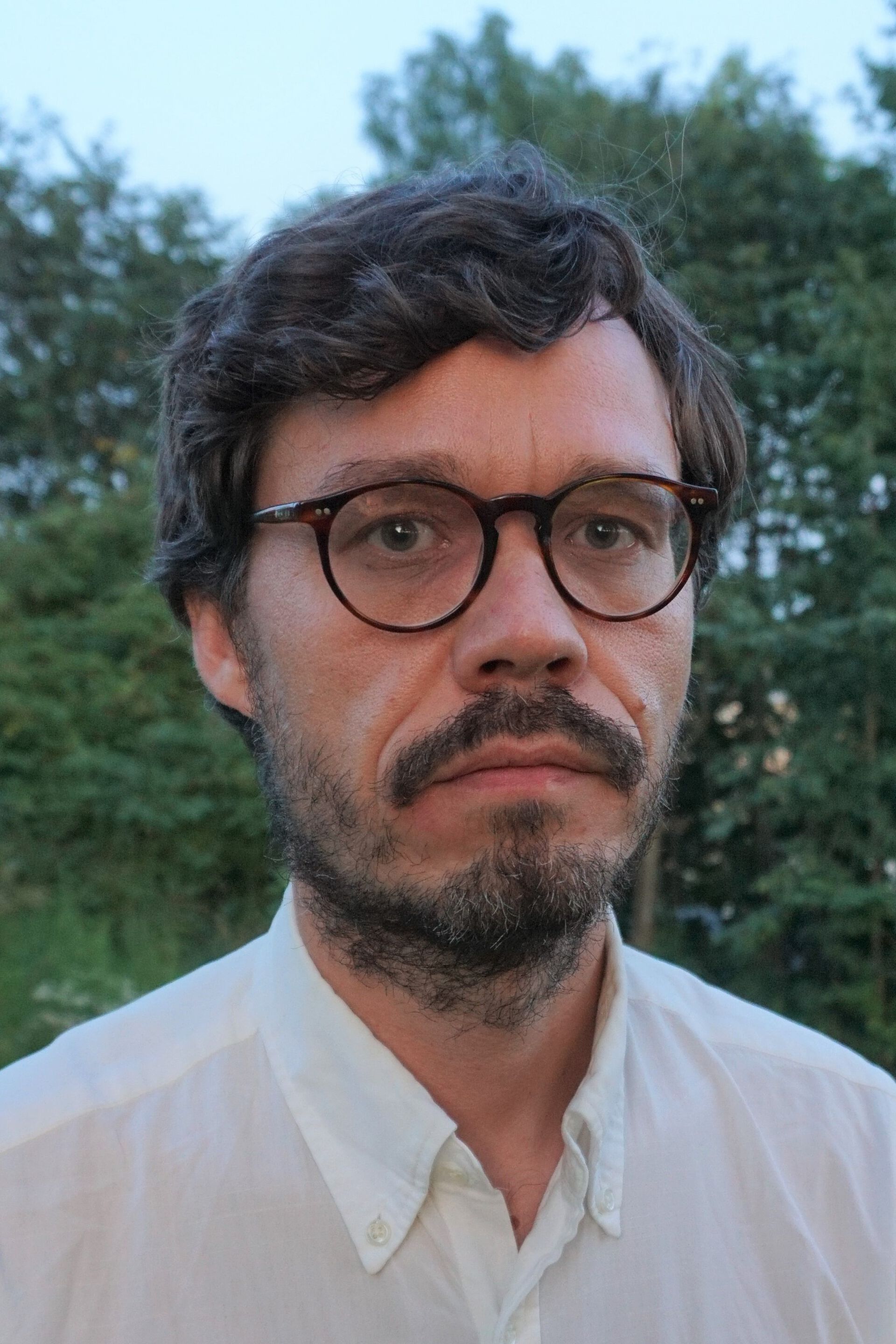
Faculty of Social Sciences, Department of Sociology and Human Geography
Project: OrgMIGRANT: How Work Organizations Shape Ethnic Stratification across Immigrant Generations: Assimilation, Segregation, and Workplace Contexts
Summary
Duration: Start date 2020-07-01, End date 2025-06-30
Call: SH3, ERC-2019-StG
Summary: Large-scale immigration has introduced salient new dimensions of ethnic stratification in Europe’s rich, liberal democracies— successful incorporation of disadvantaged, newcomer immigrant minorities now poses a critical challenge for the 21st century. Despite a vast literature on labor market inequalities between immigrants and natives, the great majority of these studies is based on surveys of individual workers and yield limited knowledge about the role of firms and workplace contexts. Still, there has been no systematical attempt to exploit linked employer-employee (LEE) data to assess how work organizations are linked to economic assimilation across immigrant generations. Here I bring a new organizational focus on workplaces as key sites where contemporary dynamics of ethnic stratification unfold at the micro level. The objective of OrgMIGRANT is to demonstrate how work organizations both contribute to and reflect changing patterns of ethnic stratification across immigrant generations. We will study workplace segregation and probe whether, how, and why ethnic boundary salience and immigrant-native inequalities vary by organizational context, net of worker traits. To this end, we will use economy-wide LEE data from Norway and comparisons with selected high-income countries (i.e., Sweden, Denmark, Germany, France, Canada, and the United States). Our world-class data allow us to situate workers inside workplaces, enabling the study of the organizational context of immigrant-native labor market inequalities in high detail using state-of-theart panel data techniques. OrgMIGRANT will be organized into three work packages: (1) organizational sources behind native-immigrant workplace segregation; (2) organizational determinants of immigrant-native inequalities within workplaces; (3) a cross-national comparison of organizational variation in workplace-specific immigrant-native pay inequalities and the size of within-job pay gaps (i.e., same occupation and workplace).
Professor Maja Janmyr
Faculty of Law, Norwegian Centre for Human Rights
Project: BEYOND: Protection without Ratification? International Refugee Law beyond States Parties to the 1951 Refugee Convention
Summary
Duration: Start date 2020-06-01, End date 2025-05-31
Call: SH2, ERC-2019-StG
Summary: Many of the world’s top refugee-hosting countries have neither signed nor ratified the 1951 Refugee Convention. So do international conventions make a difference? The Refugee Convention represents a paradigmatic – and exceptionally timely – test of this theoretical and empirical puzzle, for refugee protection is increasingly politicized and has wide-ranging implications for state sovereignty. The BEYOND project fundamentally reconsiders the impact of international refugee law by developing the first genuinely global and systematic theoretical framework for understanding the behaviour and position of states that have chosen not to sign the Refugee Convention – especially those that still accept the lion’s share of the world’s refugees. These non-party states, overlooked by scholarship and seen as ‘exceptions’ to the international refugee law regime, are at the core of this project rather than the margins. BEYOND asks: 1. What is the influence of the Refugee Convention in non-party states? 2. How do these non-party states engage with and help create the international refugee law regime? BEYOND exposes and analyzes the various ways non-party states relate to international refugee law. It brings an innovative combination of methods to bear, including case studies on 4 of the world’s top 7 refugee-hosting states–Turkey, Lebanon, Pakistan and Bangladesh. The sub-projects investigate BEYOND’s two basic hypotheses: 1. The Refugee Convention has a significant influence on the behaviour of non-party states; and 2. Non-party states engage with, and help shape developments within, international refugee law. BEYOND sheds crucial, empirically grounded light on the prevailing assumptions about whether and why non-party states are exceptional. It also advances our theoretical and scientific understanding of the complex effects of international conventions more generally.
Researcher Bodhisattva Chattopadhyay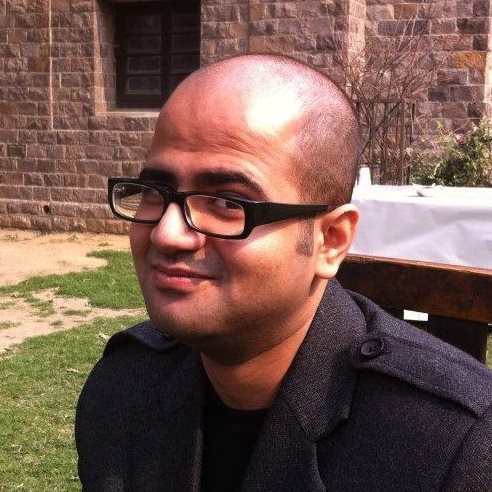
Faculty of Humanities, Department of Culture Studies and Oriental Languages
Project: COFUTURES: CoFutures: Pathways to Possible Presents
Summary
Duration: Start date 2020-01-01, End date 2024-12-31
Call: SH5, ERC-2019-StG
Summary: This project investigates future fictions from five distinct traditions: Afrofuturism, Sinofuturism, Arab/Gulf-futurism, Latin@futurism, and Indofuturism. All these fictions respond to the burning issues of the present, the transnational discourses of demographic change, climate change, and technological change, but they imagine different, localized ways of
engaging with these transnational discourses. Research Questions
What contributions can contemporary future fictions make to our understanding of global issues? The project is split into three sub-questions to structure the enquiry:
1. What are the cultural and scientific bases for the development of different geography based future fictions? 2. What are the future changes – societal and technological – imagined in these future fictions? 3. How can we understand the response to global challenges – demographic change, climate change and technological change – in the local changes imagined in these futures? Based on this, the project will develop a theory of “COFUTURES” (Co: Complex –Coexisting –Comparative). Context
The project studies the recent proliferation of fiction based on ethnic, cultural, or national identity as take-off points for imagining possible futures even if their locations of production are globally spread. While many of these have older histories, these fictions have come together in this decade as alternative visions of the future that are resistant to perceived colonial or neo-colonial hegemony and are read as new forms of self-assertion. No methodologies have been developed to study all these together as shared phenomena, and no theories exist that can even make sense of them as similar yet distinct phenomena. There have also been no attempts to understand the specific sources for these futures in terms of the kinds of scientific and technological developments they project and the societal developments they imagine as localized responses to global challenges. This is the COFUTURES aim.
Professor Siri Leknes
Faculty of Social Sciences, Department of Psychology
Project: OPIOIDREWARD: How distress alters opioid drug effects and abuse liability
Summary
Duration: Start date 2019-07-01, End date 2024-06-30
Call: SH4, ERC-2018-StG
Summary: As the opioid epidemic escalates, we must ask: why are opioids so addictive? Non-human animal research links addiction with the powerful relief opioids can offer to animals in distress. In humans, epidemiological and clinical studies converge upon social stressors and a poor social support network as key risk factors for addiction. Despite this, it is currently unknown how pre-drug distress might alter opioid drug effects. Tremendous resources are dedicated to charting how people feel after taking a drug, sidestepping the potentially profound influence of how people feel before they take the drug. Here, I will turn the current approach on its head. Using acute social distress induction before morphine administration in healthy humans, I will create a human model to determine the psychological, physiological and brain underpinnings of how social stressors increase opioids’ abuse liability. First, I will test the hypothesis that pre-drug distress enhances drug wanting (self-administration) but not drug liking (selfreport) compared to drug effects in a control condition. Second, I will use opioid blockade to confirm or falsify the hypothesis that opioid drugs ‘hijack’ brain mechanisms underpinning social support. Third, I will determine to what extent opioid drug effects are dopamine-dependent by blocking dopamine before morphine administration. I will also apply computational modelling and functional imaging to elucidate the underlying brain mechanisms. Thus, the proposal offers a powerful new methodology for resolving hotly debated questions on the independent contributions of opioids and dopamine for reward and abuse liability. In sum, the project aims to achieve a breakthrough in our understanding of how a pre-drug social distress state can alter
opioid drug mechanisms. The mechanistic understanding arising from this project could have profound implications for science, as well as for clinical care and new policies designed to contain the opioid epidemic.
Associate professor Lars Tjelta Westlye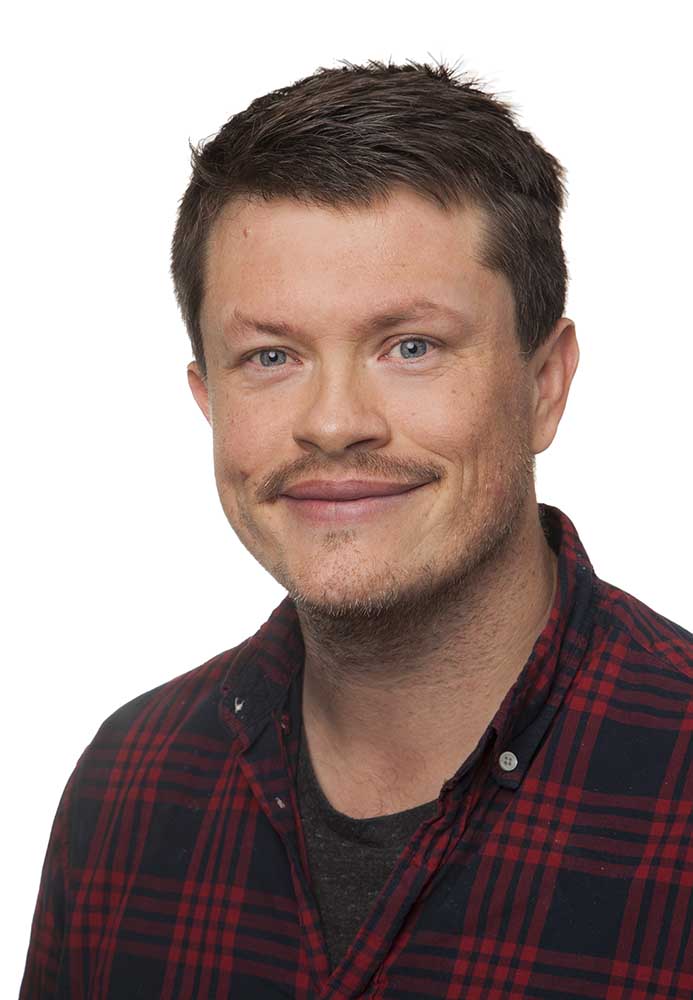
Faculty of Social Sciences, Department of Psychology
Project: BRAINMINT: Brains and minds in transition: The dark side of neuroplasticity during sensitive life phases
Summary
Duration: Start date 2019-08-01, End date 2024-07-31
Call: SH4, ERC-2018-StG
Summary: The potential and boundaries of the human mind is determined by dynamic interactions between the environment and the individual genetic architecture. However, despite several breakthroughs, the genetic revolution has not provided a coherent account of the development of the mind and its disorders, and the missing heritability is large across human traits. One explanation of this impasse is the complexity of the gene-environment interactions. Current knowledge about the determinants of a healthy mind is largely based on studies whose modus operandi is to treat the environment as a static entity, neglecting to consider the crucial fact that environmental inputs and their genetic interactions vary dramatically between life phases. The objective of BRAINMINT is to provide this missing link by zeroing in on two major life transitions, namely adolescence and pregnancy. These phases are characterized by temporarily increased brain plasticity, offering windows for adaptation and growth, but also host the emergence of common mental disorders. I propose that a multi-level investigation with this dark side of brain plasticity as the axis mundi will add a mechanistic understanding of this link between growth and vulnerability. I will test the main hypothesis that mechanisms that boost neuroplasticity promote adaptation to a dynamic
environment, but at the cost of increased risk of psychopathology if exposed to a combination of genetic and environmental triggers. To this end I will utilize cutting-edge longitudinal brain imaging, electrophysiology, rich cognitive and clinical data, immune markers, gene expression and genetics. I will leverage on massive imaging data (n>40,000) and novel tools to increase power and generalizability and improve brain- and gene-based predictions of complex traits. Aiming to help resolving one of the modern day enigmas, BRAINMINT is a pioneering and high risk/high gain effort to find mechanisms of brain plasticity that support and harm the brain.
Associate professor Aike Peter Rots
Faculty of Humanities, Department of Culture Studies and Oriental Languages
Project: WhoP: Whales of Power: Aquatic Mammals, Devotional Practices, and Environmental Change in Maritime East Asia
Summary
Duration: Start date 2019-01-01, End date 2023-12-31
Call: SH3, ERC-2018-StG
Summary: In various parts of East Asia, aquatic mammals are associated with divine power, and serve as objects of devotion. In South and central Vietnam, cetaceans are worshipped as life-saving deities. In some Japanese coastal areas, the spirits of whales are venerated during ritual ceremonies. In China, Cambodia and the Ryukyu Islands, aquatic mammals have all been associated with water deities. These animals continue to carry significant symbolic capital today – if no longer as gods, at least as local “heritage” and symbols of nature conservation, acquiring new meanings in the context of secularisation, (forced) displacement, and environmental degradation. Whales of Power is concerned with the comparative study of human-cetacean relations in maritime East Asia, as expressed in popular worship practices and beliefs. We will examine several of these traditions in different parts of the region, through a combination of historical and ethnographic research. Our main hypothesis is that changes in local worship traditions reflect changes in human-nature relations, which are caused by wider social, economic and environmental developments. Thus, marine mammals and associated worship practices serve as a prism, through which we approach human responses to socio-economic and environmental change in Asian coastal communities. The innovative character of Whales of Power lies in the ways in which it combines state-of-the-art theoretical approaches from different disciplinary backgrounds in order to reach new understandings of the ways in which human-nature-god relations reflect social and environmental changes. It has three important theoretical objectives: 1) apply recent theoretical developments associated with “environmental humanities” to the comparative study of popular religion; 2) reconsider the role of local worship traditions in the Asian Secular Age, examining the new meanings attributed to ritual practices; and 3) establish a new comparative paradigm in Asian studies.
Researcher Johannes Espolin Rokstad Hov
Faculty of Medicine, Institute of Clinical Medicine
Project: StopAutoimmunity: Recurrent disease in the liver transplant: window to identify and stop gut signals driving autoimmunity
Summary
Duration: Start date 2019-04-01, End date 2023-03-31
Call: LS7, ERC-2018-StG
Summary: Autoimmune disease is an increasing health concern. These diseases are strongly associated with altered gut microbiome. When immunosuppression fails there is little to offer in terms of therapy. In this project, I hypothesize that gut signals (microbial factors from the intestine) unaffected by immunosuppression are key drivers of autoimmune diseases. I propose to use recurrent autoimmune disease after organ transplantation as a human disease model to identify and stop these gut signals, providing a novel approach to close the gap between basic microbiome research and patient care in autoimmune diseases.
To identify autoimmunity-related gut signals, I will use patients with primary sclerosing cholangitis (PSC), an inflammatory disease of the bile ducts. PSC is a common indication for liver transplantation, but after transplantation there is high risk of recurrent PSC (rPSC). I recently showed that the PSC gut microbiome has low diversity and identified microbial metabolites associated with severe PSC. Preliminary data show that the post-transplant gut is even less diverse, suggesting that microbial factors drive autoimmunity. In this project I will identify gut signals by in-depth investigation of gut bacterial genes and circulating metabolites in the blood. The outcome will be diagnostic and prognostic markers overlapping in PSC and rPSC, defined by changes in gut bacterial genes and concentrations of bacterial metabolites in the blood. Next, I will investigate if common drugs or interventions influence the identified autoimmunity-related gut signals. By generating a library of interventions influencing the gut microbiome it will be possible to select promising candidates for pilot treatment trials after liver transplantation. The outcome of StopAutoimmunity will be gut signals useful as novel biomarkers and treatment targets. These may directly translate into improved patient care but also provide a foundation for understanding the mechanisms of autoimmunity.
Associate professor Paolo Giovanni Piaquadio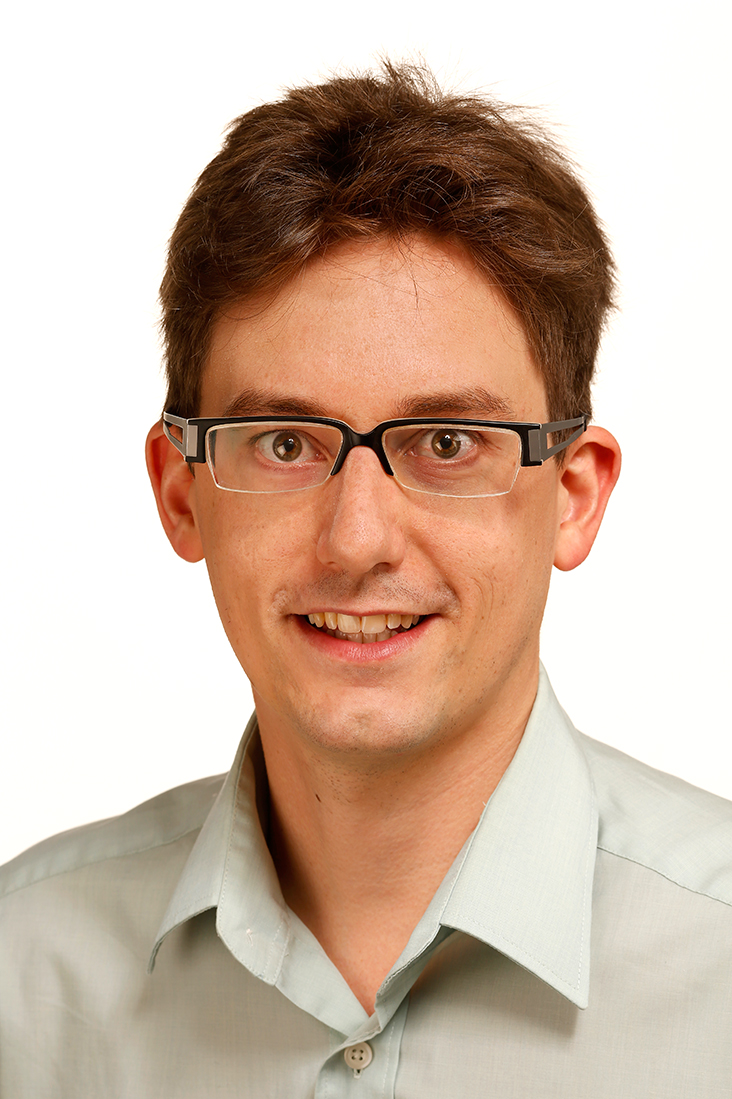
Faculty of Social Sciences, Department of Economics
Project: VALURED: Value Judgments and Redistribution Policies
Summary
Duration: Start date 2019-01-01, End date 2023-12-31
Call: SH1, ERC-2018-StG
Summary: Heterogeneity and diversity are a pervasive aspect of modern societies. Differences in individuals’ preferences, needs, skills, and information are key to explain variation in individuals’ behavior and to anticipate individuals’ responses to policy changes. There is no consensus, however, about how to take these differences into account when evaluating policies.
Project VALURED will reexamine this ethical challenge by characterizing the mapping between value judgments—i.e. principles of distributive justice—and redistribution policies. This mapping is tremendously important for welfare analysis and policy design. First, it associates the most desirable policy to each set of value judgments, providing an “ethical menu” to policy design. Second, it gives an ethical identity of each policy proposal, that is, it identifies the value judgments a policymaker endorses when proposing a specific policy.
The main objectives of VALURED are to:1) identify transparent and compelling value judgments that accommodate heterogeneity and diversity; 2) show the implications of these value judgments for the evaluation and design of redistribution policies; 3) characterize welfare criteria that respect individuals’ preferences and account for individuals’ differences in needs, skills, and information; 4) provide new insights for the design of income, capital, and inheritance taxation; 5) develop simple formulas that express optimal policies as a function of observable heterogeneity and ethical parameters.
Project VALURED combines welfare economics with public economics. The first part deals with income taxation and addresses the ethical challenges related to individuals’ heterogeneity in preferences, needs, and skills. The second part focuses on capital taxation and addresses individuals’ differences in risk preferences and information. The third part analyses the design of inheritance taxation and addresses the social concerns for intergenerational and intragenerational equity.
Researcher Heidi ?stb? Haugen
Faculty of Humanities, Department of Culture Studies and Oriental Languages
Project: BROKEX: Brokering China’s Extraversion: An Ethnographic Analysis of Transnational Arbitration
Summary
Duration: Start date 2019-01-01, End date 2023-12-31
Call: SH2, ERC-2018-StG
Summary: Chinese global engagements are deepening across sectors and geographic regions. The objective of BROKEX is to fill specific gaps in knowledge about how China’s extraversion advances. The project takes an original approach by examining brokers who mediate in transnational fields. It opens the “black box” of China’s global integration by moving beyond descriptions of input and output characteristics to elucidate underlying dynamics. The objective will be achieved in two phases. First, the PI and two postdoctoral researchers will carry out three ethnographic case studies that yield complementary information on the common challenge of brokering across geographic scales: (1) Connecting low-cost Chinese manufacturing with African markets; (2) Integrating Chinese academic research with global scientific communities; (3) Attracting new foreign investments to China to underpin industrial upgrading. The diverse cases offer insights into the mechanisms of brokerage across distinctive sectors. The team will collect data the morphology of social networks as its starting point, and focuses on how actors positioned at the intersection between groups operate. BROKEX adopts an innovative approach by examining how actors strategically seek to shape network morphologies in order to bridge gaps between groups. By directing theoretical attention towards relationship formation that precedes acts of brokerage, this line of inquiry advances understandings of how and why brokered connections emerge. Ethnographic case studies combined with critical theorization will generate new knowledge about the processes beneath the “rise of China” ─ one of the most consequential socioeconomic developments of our times.
in the Pearl River Delta, South China, while based at Sun Yat-sen University, with which the PI has longstanding collaboration. In the second step, we build on the empirical findings and extant literature to develop brokerage theory. Social scientific research on brokerage commonly uses the morphology of social networks as its starting point, and focuses on how actors positioned at the intersection between groups operate. BROKEX adopts an innovative approach by examining how actors strategically seek to shape network morphologies in order to bridge gaps between groups. By directing theoretical attention towards relationship formation that precedes acts of brokerage, this line of inquiry advances understandings of how and why brokered connections emerge. Ethnographic case studies combined with critical theorization will generate new knowledge about the processes beneath the “rise of China” ─ one of the most consequential socioeconomic developments of our times.
Associate professor Trude Storelvmo
Faculty of Mathematics and Natural Sciences, Department of Geosciences
Project: MC2: Mixed-phase clouds and climate (MC2) – from process-level understanding to large-scale impacts
Summary
Duration: Start date 2018-03-01, End date 2023-02-28
Call: PE10, ERC-2017-StG
Summary:
The importance of mixed-phase clouds (i.e. clouds in which liquid and ice may co-exist) for weather and climate has become increasingly evident in recent years. We now know that a majority of the precipitation reaching Earth’s surface originates from mixed-phase clouds, and the way cloud phase changes under global warming has emerged as a critically important climate feedback. Atmospheric aerosols may also have affected climate via mixed-phase clouds, but the magnitude and even sign of this effect is currently unknown. Satellite observations have recently revealed that cloud phase is misrepresented in global climate models (GCMs), suggesting systematic GCM biases in precipitation formation and cloud-climate feedbacks. Such biases give us reason to doubt GCM projections of the climate response to CO2 increases, or to changing atmospheric aerosol loadings. This proposal seeks to address the above issues, through a multi-angle and multi-tool approach: (i) By conducting field measurements of cloud phase at mid- and high latitudes, we seek to identify the small-scale structure of mixed-phase clouds. (ii) Large-eddy simulations will then be employed to identify the underlying physics responsible for the observed structures, and the field measurements will provide case studies for regional cloud- resolving modelling in order to test and revise state-of-the-art cloud microphysics parameterizations. (iii) GCMs, With revised microphysics parameterizations, will be confronted with cloud phase constraints available from space. (iv) Finally, the same GCMs will be used to re-evaluate the climate impact of mixed-phase clouds in terms of their contribution to climate forcings and feedbacks. Through this synergistic combination of tools for a multi-scale study of mixed-phase clouds, the proposed research has the potential to bring the field of climate science forward, from improved process-Level understanding at small scales, to better climate change predictions on the global scale.
Associate professor Ruth Jane Prince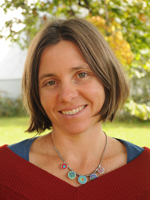
Faculty of Medicine, Institute of Health and Society
Summary
Duration: Start date 2018-04-01, End date 2023-03-31
Call: SH2, ERC-2017-StG
Summary: UNIVERSAL HEALTH is an anthropological study that follows how a new global policy, Universal Health Coverage (UHC), travels and is engaged by policy-makers, bureaucrats and citizens in three African countries. Defined by the WHO as ensuring that all people can use the health services they need without financial hardship, UHC is a powerful concept that approaches public health as a matter of justice and obligation and is included in the Sustainable Development Goals. UHC is particularly important in Africa, where structural-adjustment policies undermined state capacity, promoted privatization and pushed the burden of payment onto the poor. Recent global health initiatives have done little to address the neglect of national health-care systems and citizens’ lack of trust in them. In these contexts UHC is interesting because it reinserts questions of state responsibility and the public good into health-care. Historically however, African states have only partially pursued the public good, while in practice UHC is surrounding by conflicting interests. UHC is thus not a universal model but a contested field, making it an intriguing site for anthropological research. With a focus on actors and institutions at global, national and local levels in each country, the project will explore how moves towards UHC engage relations between states and citizens and universal concepts such as the public good; how UHC intersects with formal systems of social protection; and how it influences informal social networks that support health, thus situating UHC in national histories and social practices. Tracking the frictions surrounding UHC at the levels of policy-making, implementation, among beneficiaries, and in public debate, the project will use ethnographic methodology in innovative ways through fieldwork that is multi-sited and multi-level. The project’s focus on a global policy and the public good opens new research directions and will produce knowledge of relevance beyond Africa.
Professor Andreas Moxnes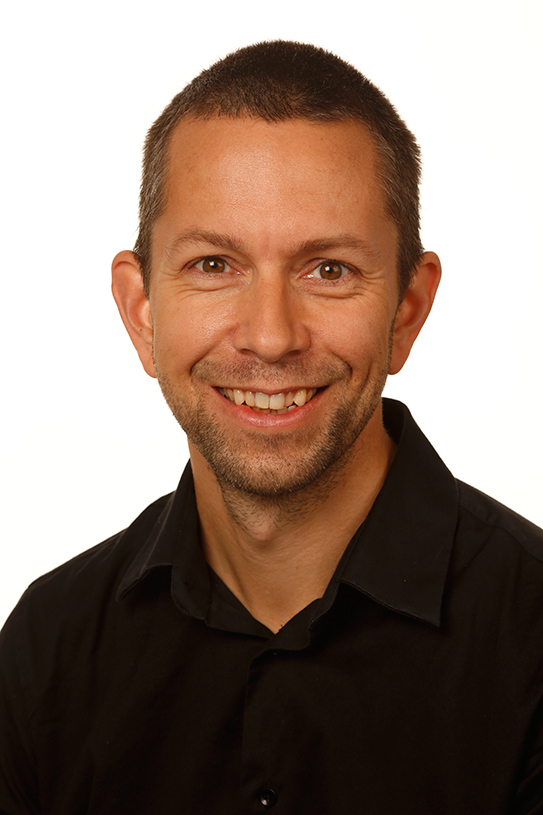
Faculty of Social Sciences, Department of Economics
Project: GLOBALPROD: The Global and Local Organization of Production
Summary
Duration: Start date 2017-01-01, End date 2021-12-31
Call: SH1, ERC-2016-StG
Summary: A defining feature of the global economy is the gradual fragmentation of production across firms and borders, a phenomenon that has been termed outsourcing or global value Chains. State-of-the-art empirical economic analysis on value chains has mostly been limited to the study of aggregate data because there is limited data on actual firm-to-firm linkages in the global economy. Even less is currently known about which products are typically outsourced, and which workers are affected. This project will change that. I will bring together four unique firm-to-firm datasets on local and global value chains that will push the research frontier forward in two main directions: - Previous research has shown that economic integration encourages growth. Due to data limitations, however, we know little about the origins of growth, and to what extent the emergence of value chains can explain the growth response. New theory is needed, where firm-to-firm connections are endogenously formed in response to economic integration. I will confront theory with data and directly test whether integration facilitates new buyer-supplier relationships and Growth. - Previous research has found that economic integration has large negative effects on wages for low-skill workers. But again, due to data limitations, it is unclear to what extent value chains are responsible for this. Simply put, the impact of outsourcing on wages will depend on which workers are displaced by outsourcing. Until now, researchers have not been able to observe which workers, along with their occupations and skills, that are employed in both the supplying and outsourcing firm. For the first time, this information will be available, allowing for a rich analysis of labor market effects for different skill Groups.
Researcher Florian Diekert
Faculty of Mathematics and Natural Sciences, Centre for Ecological and Evolutionary Synthesis
Project: NATCOOP: How nature affects cooperation in common pool resource systems
Summary
Duration: Start date: 2016-08-01, End date: 2021-01-31
Call: SH3, ERC-StG-2015
Summary: The constraints and dynamics set by nature have a deep and significant impact on economic fundamentals and the ability to successfully manage renewable resources. This can be taken into account to formulate effective policies. However, the causal pathway from the natural to the social environment and its feedback for sustainable resource use is often overlooked, not the least because preferences and incentives are traditionally viewed as being stable and fixed. Yet, it is high time to take this new perspective: Social-ecological systems around the globe are under mounting stress and common pool resources are vital, in particular in developing countries. This project aims to establish how nature shapes preferences and incentives of economic agents and how this in turn affects common-pool resource management. To this end, I investigate three mechanisms: (A) how tipping points and thresholds in the natural system may encourage cooperation; (B) how the volatility of resource abundance influences risk preferences and how this in turn affects community-based management; and (C) how leadership, which is closely linked to risk preferences, interacts with the natural environment to foster cooperation that overcomes common-pool dilemmas. NATCOOP's bold agenda pushes the frontier of economics and sustainability science. Not only the investigation of the feedbacks between nature and cooperation from a new angle, also the scale and scope of the project -- combining cases from different socio-economic and ecological setting at Three continents with theoretical and statistical work -- will generate new knowledge and be highly rewarding. Though challenging, I am confident that my background in economics and ecology puts me in an ideal position to achieve this important task. My ultimate goal is to identify circumstances in which natural preconditions and the social setting may og hand in hand to promote the sustainable use of renewable Resources.
Associate professor Koen Vervaeke
Faculty of Medicine, Institute of Basic Medical Sciences
Project: SurfaceInhibition: the role of 5HT3a inhibitory interneurons in sensory Processing
Summary
Duration: Start date: 2015-10-01, End date: 2020-03-31
Call: LS5, ERC-StG-2014
Summary: How do cortical circuits process sensory stimuli that leads to perception? Sensory input is encoded by complex interactions between principal excitatory neurons and a diverse population of inhibitory cells. Distinct inhibitory neurons control different subcellular domains of target principal neurons, suggesting specific roles of different cells during sensory processing. However, the individual contribution of these inhibitory subtypes to sensory processing remains poorly understood. This is mainly due to the technical challenges of recording the activity of identified cell types in-vivo, in response to quantified sensory stimuli. Therefore, I propose a novel approach based on four pillars: 1) An optically accessible circuit in the superficial layers of the cortex, comprised of inhibitory cells expressing the serotonin receptor 5HT3a, and the distal dendrites of pyramidal neurons. 2) A novel combination of electrophysiology and 3D two-photon imaging to simultaneously record the activity of morphologically identified 5HT3a cells and their dendritic targets. 3) A head-fixed perceptual decision task, whereby mice use their whiskers to determine the location of an object, allowing an accurate description of the sensory timulus. 4) The integration of experimental data and computer models to gain mechanistic insights into circuit functions. The 5HT3a cells and the distal dendrites of pyramidal neurons receive ‘top-down’ contextual information from other cortical areas that is essential for constructing meaningful perceptions of sensory stimuli. Thus I hypothesize that 5HT3a cells influence sensory perceptions by controlling the excitability of the pyramidal cell distal dendrites that integrate top-down and sensory input. Thus, I will not only reveal novel functions of inhibitory neurons, I will also shed light on how top-down and sensory input is integrated, and I will provide novel methods to test the functions of other cell types in normal mice and disease models.
Professor Hedvig Nordeng
Faculty of Mathematics and Natural Sciences, Department of Pharmacy
Project: DrugsInPregnancy: Effects of Medication Use in Pregnancy on Infant Neurodevelopment
Summary
Duration: Start date: 2015-09-01, End date: 2020-08-31
Call: LS7, ERC-2014-StG
Summary: Currently, thousands of pregnant women in the EU and worldwide are being increasingly prescribed medications for which we do not have sufficient information on fetal safety. I hypothesize that our current understanding of safety pharmacology is oversimplified and that medication prescribed during pregnancy may play an unrecognized role in the development of neurodevelopmental disorders. In this research proposal we have the unique opportunity to use a large population-based birth cohort including over 100 000 mother-child pairs and biological data to study how medications may act on the offspring. This offers novel and innovative pharmaceutical insight into the safety of medications. By linking several nationwide registries (National Prescription Data Base, Norwegian Patient Registry, Medical Birth Registry) to a population-based birth cohort (n=108 000) we specifically aim to 1) estimate the effect of prenatal exposure to psychotropics and analgesics on neurodevelopment in young children using a range of methodological approaches to strengthen causal inference. With these data made available, we will 2) determine whether fetal exposure to specific medications results in epigenetic events (i.e. changes in DNA methylation) in the child, and 3) determine whether such changes increase the risks of neurodevelopmental disorders in childhood. The recent availability of large scale human data, possibility of register linkages and genome-wide mapping of DNA methylation at affordable costs makes this research proposal now possible. The size and richness of data including over hundred thousand pregnancies and existence of biological material makes this project unique. The final outcome will be fundamentally new knowledge about how medications affect the developing unborn child and will open up new horizons and opportunities for future research in a new field of “pharmaco-epigenetics” and enhance our understanding of origins of neurodevelopmental disorders.
Professor Kristin Asdal
Faculty of Social Sciences, Centre for Technology, Innovation and Culture
Project: LITTLE TOOLS: Enacting the Good Economy: Biocapitalization and the little tools of valuation
Summary
Duration: Start date: 2015-09-01, End date: 2020-08-31
Call: SH2, ERC-2014-StG
Summary: What shall we live off in the future? Where will our food come from, and what will form the basis for our economies? A so-called “blue revolution”, where fish become farmed rather than caught, is increasingly presented as an answer to the above questions. This transformation of the economy exemplifies ongoing efforts to produce new forms of Capital out of the ordering and reordering of life. These processes are intimately related to the expanding life sciences, the bioeconomy and what is sometimes called new forms of biocapital.But how do such large transformations take Place in actual practice, and by which means? This project argues that if we are to understand such major transformations we need to study “little tools”, that is, material-semiotic entities that carefully modify and work upon bodies, markets and science.Emerging bioeconomies are expected not only to produce economic value but also to enact values in other ways that contribute to what this project refers to as “the good economy”. Such values include enabling sustainable fisheries, secure animal welfare or sustainable growth.The main hypothesis of the current project is that the enactment of the good economy can be studied by valuation practices performed by material-semiotic little tools. The project will explore this hypothesis at multiple sites for biocapitalization: science, the market, policy and funding institutions. This project will focus on how these interact and encounter one another. The aim is twofold: first, to provide new empirical insights about how biocapitalization processes are enacted in practice and at strategic sites, using cross-disciplinary methods from actor-network theory, the humanities and economic sociology; second to contribute analytically and methodologically to the field of Science and Technology Studies (STS) by drawing on resources from economic sociology and the humanities in order to provide an analytical framework for comprehending biocapitalization practices.
Researcher Simen Kvaal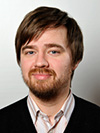
Faculty of Mathematics and Natural Sciences, Department of Chemistry
Project: BIVAQUM: Bivariational Approximations in Quantum Mechanics and Applications to Quantum Chemistry
Summary
Duration: Start date: 2015-04-01, End date: 2020-03-31
Call: ERC-StG-2014
Summary: The standard variational principles (VPs) are cornerstones of quantum mechanics, and one can hardly overestimate their usefulness as tools for generating approximations to the time-independent and time-dependent Schr?odinger equations. The aim of the proposal is to study and apply a generalization of these,
the bivariational principles (BIVPs), which arise naturally when one does not assume a priori that the system Hamiltonian is Hermitian.
This unconventional approach may have transformative impact on development of ab initiomethodology, both for electronic structure and dynamics. The first objective is to establish the mathematical foundation for the BIVPs. This opens up a whole new axis of method development for ab initio approaches. For instance, it is a largely ignored fact that the popular traditional coupled cluster (TCC) method can be neatly formulated with the BIVPs, and TCC is both polynomially scaling With the number of electrons and size-consistent. No “variational” method enjoys these properties simultaneously, indeed this seems to be incompatible with the standard VPs.
Armed with the BIVPs, the project aims to develop new and understand existing ab initio methods. The second objective is thus a systematic multireference coupled cluster theory (MRCC) based on the BIVPs. This is in itself a novel approach that carries large potential benefits and impact. The third and last objective is an implementation of a new coupled-cluster type method where the orbitals are bivariational parameters. This gives a size-consistent hierarchy of approximations to multiconfiguration Hartree--Fock.
Researcher Ann-Cecilie Larsen
Faculty of Mathematics and Natural Sciences, Department of Physics
Project: gRESONANT: Resonant Nuclear Gamma Decay and the Heavy-Element Nucleosynthesis
Summary
Duration: Start date: 2015-03-01, End date: 2020-02-28
Call: PE2, ERC-StG-2014
Summary: THE GRAND CHALLENGE: The “Holy Grail” of nuclear astrophysics is to understand the astrophysical processes responsible for the formation of the elements. A particularly challenging part is the description of the heavy-element nucleosynthesis. The only way to build the majority of these heavy nuclides is via neutron-capture processes. Unaccounted-for nuclear structure effects may drastically change these rates.
MAIN HYPOTHESIS: Nuclear low-energy gamma-decay resonances at high excitation energies will enhance the astrophysical neutron-capture reaction rates.
NOVEL APPROACH: This proposal is, for the first time, addressing the M1 scissors resonance in deformed, neutron-rich nuclei and superheavy elements. A new experimental technique will be developed to determine the electromagnetic nature of the unexpected upbend enhancement. Further, s-process branch points for the Re-Os cosmochronology will be studied for the first time with the Oslo method.
OBJECTIVES:
1) Measure s-process branch point nuclei with the Oslo method
2) Radioactive-beam experiments for neutron-rich nuclei searching for the low-energy upbend and the M1 scissors resonance
3) Develop new experimental technique to identify the upbend’s electromagnetic nature
4) Superheavy-element experiments looking for the M1 scissors resonance
POTENTIAL IMPACT IN THE RESEARCH FIELD: This proposal will trigger a new direction of research, as there are no data on the lowenergy gamma resonances neither on neutron-rich nor superheavy nuclei. Their presence may have profound implications for the astrophysical neutron-capture rates. Developing a new experimental technique to determine the electromagnetic character of the upbend is crucial to distinguish between two competing explanations of this phenomenon. Unknown neutron-capture cross sections will be estimated with a much better precision than prior to this project, and lead to a major leap forward in the field of Nuclear astrophysics.
Professor Kristine Beate Walhovd 
Faculty of Social Sciences, Department of Psychology
Project: NEUROCOGPLASTICITY: Neurocognitive Plasticity Lifespan Mechanisms of Change
Summary
Duration: Start date: 2013-03-01, End date: 2018-02-28
Call: SH4, ERC-2012-StG
Summary: Human brains and cognitive functioning are in a constant flux of change throughout life. The question is: can you decide to what extent your brain and cognition will change, and how? This has enormous implications - it is a question of by which mechanisms humans can adapt to their changing environments with changing minds. And it is a question of how to handle the frequent cognitive problems experienced by especially elderly adults. Research has yielded astonishingly different perspectives on cognitive and brain changes through life. On the one hand, studies point to brain development and aging being under genetic control. On the other hand, there are associations between intellectual and physical experiences and cognitive function across the lifespan, and recent studies show that brain and cognition are improved by targeted cognitive interventions. However, the time course, stability, generalizability and restrictions to training effects on brain and cognition are largely unknown. The aim of this proposal is to uncover mechanisms governing neurocognitive plasticity - its potential, restrictions and time course - in young and old age, and reconcile the apparent contradiction between genetic control and environmental impact. I will study the effects of memory training with repeated Magnetic Resonance Imaging and cognitive tests in a new experimental time-series cross-over design with 200 young (20-30 yrs of age) and 200 elderly (70-80 yrs of age) adults. Neurocognitive changes in controls not training are compared to those in participants undergoing alternate repeated periods of memory training and rest (A-B-A-B) for one year, with a three-year follow up. This will allow me to identify 1) distinct modulators of plastic changes in terms of age, neural integrity, and genotype, 2) the time course of plastic changes in brain and cognition, their stability across short and long time, and 3) the extent of transfer of memory training effects to other cognitive functions.
Professor Sergey Neshveyev
Faculty of Mathematics and Natural Sciences, Department of Mathematics
Project: NCGQG: Noncommutative geometry and quantum group
Summary
Duration: Start date: 2013-01-01, End date: 2017-12-31
Call: PE1, ERC-2012-StG
Summary: The goal of the project is to make fundamental contributions to the study of quantum groups in the operator algebraic setting. Two main directions it aims to explore are non-commutative differential geometry and boundary theory of quantum random walks. The idea behind non-commutative geometry is to bring geometric insight to the study of non-commutative algebras and to analyse spaces which are beyond the reach via classical means. It has been particularly successful in the latter, for example, in the study of the spaces of leaves of foliations. Quantum groups supply plenty of examples of non-commutative algebras, but the question how they fit into non-commutative geometry remains complicated. A successful union of these two areas is important for testing ideas of non-commutative geometry and for its development in new directions. One of the main goals of the project is to use the momentum created by our recent work in the area in order to further expand the boundaries of our understanding. Specifically, we are going to study such problems as the local index formula, equivariance of Dirac operators with respect to the dual group action (with an eye towards the Baum-Connes conjecture for discrete quantum groups), construction of Dirac operators on quantum homogeneous spaces, structure of quantized C*-algebras of continuous functions, computation of dual cohomology of compact quantum groups. The boundary theory of quantum random walks was created around ten years ago. In the recent years there has been a lot of progress on the measure-theoretic side of the theory, while the questions largely remain open on the topological side. A significant progress in this area can have a great influence on understanding of quantum groups, construction of new examples and development of quantum probability. The main problems we are going to study are boundary convergence of quantum random walks and computation of Martin boundaries. Read more about the project.
Researcher Adriano Mazzini
Faculty of Mathematics and Natural Sciences, Center for Earth Evolution and Dynamics
Summary
Duration: Start date: 2013-01-01, End date: 2017-12-31
Call: PE10, ERC-2012-StG
Summary: The 29th of May 2006 several gas and mud eruption sites suddenly appeared along a fault in the NE of Java, Indonesia. Within weeks several villages were submerged by boiling mud. The most prominent eruption site was named Lusi. To date Lusi is still active and has forced 50.000 people to be evacuated and an area of more than 7 km2 is covered by mud. The social impact of the eruption and its spectacular dimensions still attract the attention of international media. Since 2006 I have completed four expeditions to Indonesia and initiated quantitative and experimental studies leading to the publication of two papers focussing on the plumbing system and the mechanisms of the Lusi eruption. However still many unanswered questions remain. What lies beneath Lusi? Is Lusi a mud volcano or part of a larger hydrothermal system? What are the mechanisms triggering the eruption? How long will the eruption last? LUSI LAB is an ambitious project that aims to answer these questions and to perform a multidisciplinary study using Lusi as a unique natural laboratory. Due to its relatively easy accessibility, the geological setting, and the vast scale, the Lusi eruption represents an unprecedented opportunity to study and learn from an ongoing active eruptive system. The results will be crucial for understanding focused fluid flow systems in other sedimentary basins world-wide, and to unravel issues related to geohazards and palaeoclimate aspects. The project will use multisensory sampling devices within the active feeder channel and a remote-controlled raft and flying device to access and sample the crater and the erupted gases. UV-gas camera imaging to measure the rate and composition of the erupted gases will be coupled with a network of seismometers to evaluate the impact that seismicity, local faulting and the neighbouring Arjuno-Welirang volcanic complex have on the long-lasting Lusi activity. This information will provide robust constraints to model the pulsating Lusi behavior.
Professor B?rd Harstad
Faculty of Social Sciences, Department of Economics
Project: GINE: General Institutional Equilibrium - theory and policy implications
Summary
Duration: Start date: 2012-07-01, End date: 2016-06-30
Call: SH1, ERC-2011-StG
Summary: Existing institutional theory, including political economics and contract theory, convincingly show that institutional details have large impacts on economic and policy outcomes. Once this is recognized, it follows that contracts should depend on the organisational design of the institution to which the contract is offered. Stage 1 of Project Gine aims at characterising optimal contracts as a function of this design. Stage 2 develops a framework for endogenising and characterising the optimal institutional design. At Stage 3, sets of institutions are endogenised at the same time, where the design of one is an optimal response to the designs of the others. This outcome is referred to as a general institutional equilibrium. Such a theory or methodological framework has several immensely important applications. Development aid contracts should carefully account for the political structure in the recipient country; otherwise the effect of aid may surprise and be counterproductive. The major application motivating this study, however, is environmental policy. Not only must the optimal environmental policy be conditioned on political economy forces; it must also be a function of institutional details, such as the political system. This can explain why the choice of instrument differs across political systems, and why politicians often prefer standards rather than economic instruments. Furthermore, we still do not have a good knowledge of how to design effective and implementable international environmental treaties. The optimal treaty design as well as the best choice of policy instrument must take into account that certain institutions (e.g., interest groups, firm structures, and perhaps even local governance) respond endogenously to these policies.
Professor Anders Martin Fjell 
Faculty of Social Sciences, Department of Psychology
Summary
Duration: Start date: 2012-02-01, End date: 2017-01-31
Call: SH4, ERC-2011-StG
Summary: The creation of personal, episodic memory from a previous experience is a remarkably complex process, which substantially differs from the processes leading to non-personal knowledge and memory about the world, so-called semantic memory. The act of remembering an episodic event is as much an act of creation as an act of reproduction. Modality-specific memory items are assembled through a re-construction process that allows us to re-experience the episode in rich details. Recent research has shown that recall of episodes and imagination of the future depends on a common core brain network. Early damage to this network will dramatically affect the development of personal memories, effectively preventing the creation of a vivid personal past, while leaving general cognitive development relatively intact. Still, no attempts have been made to study how development and subsequent aging of constructive memory, the arguably most relevant form of memory for daily life-function, is determined by structural and functional properties of the brain. I propose to study how characteristics of the brain determine the development of the ability to form episodic memories in childhood, and how the same factors contribute to the decline in episodic memory function experienced by most healthy elderly. The aim of the current proposal is to understand how maturation and aging of the brain networks for reconstructive memory impacts the ability to form and re-experience ones past. To address this aim, we will study children (4-10 years), adolescents (11-19 years), young adults (20-30 years) and elderly (60-80 years), 100 participants in each group, with repeated cognitive testing and brain scanning with magnetic resonance imaging (MRI). The children will be examined annually, yielding four examinations, while the other participants will be examined bi-annually, yielding to examinations within the project period.
Professor Snorre Harald Christiansen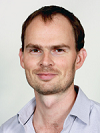
Faculty of Mathematics and Natural Sciences, Department of Mathematics
Project: STUCCOFIELDS: Structure and scaling in computational field theories
Summary
Duration: Start date: 2012-01-01, End date: 2016-12-31
Call: PE1, ERC-2011-StG
Summary: The numerical simulations that are used in science and industry require ever more sophisticated mathematics. For the partial differential equations that are used to model physical processes, qualitative properties such as conserved quantities and monotonicity are crucial for well-posedness. Mimicking them in the discretizations seems equally important to get reliable results. This project will contribute to the interplay of geometry and numerical analysis by bridging the gap between Lie group based techniques and finite elements. The role of Lie algebra valued differential forms will be highlighted. One aim is to develop construction techniques for complexes of finite element spaces incorporating special functions adapted to singular perturbations. Another is to marry finite elements with holonomy based discretizations used in mathematical physics, such as the Lattice Gauge Theory of particle physics and the Regge calculus of general relativity. Stability and convergence of algorithms will be related to differential geometric properties, and the interface between numerical analysis and quantum field theory will be explored. The techniques will be applied to the simulation of mechanics of complex materials and light-matter interactions.
Professor Hugo Lundhaug
Faculty of Theology
Summary
Duration: Start date: 2012-01-01, End date: 2016-12-31
Call: SH5, ERC-2011-StG
Summary: Using recently accessible Coptic monastic texts, new philology, and cognitive theories of literature and memory, this project aims to shed important new light on the production and use of some of the most enigmatic manuscripts discovered during the last century, namely the Nag Hammadi codices, together with the highly similar Berlin, Bruce, Askew, and Tchacos codices. This will be done by interpreting the contents of the codices as they are preserved to us in their Coptic versions primarily within the context of fourth- and fifth-century Egyptian monasticism and contemporary Coptic texts. This approach constitutes a decisive shift away from interpretations of the hypothetical Greek originals of this material within hypothetical first, second, or third century contexts all over the Mediterranean world, to a focus on the context of the production and use of the texts as they have been preserved in actual manuscripts. The project will approach the material from a New Philology perspective on manuscript culture, implying a focus on the users and producers of the extant manuscripts, and on textual variants, rewriting, and paratextual features as important clues. From this point of view, the project will also employ cognitive theories of literature and memory in order to illuminate early monastic attitudes towards books, canonicity, and doctrinal diversity in the context of monastic literary practices of copying, writing, memorization, and recitation, and the interfaces between orality and literacy. The project will thus combine new and traditional methodologies within a multi-disciplinary theoretical framework, thus bringing fresh theoretical and historico-philosophical approaches to bear on a traditionally methodologically conservative field of study, and has the potential to radically alter our picture of early Christian monasticism, manuscript culture, and doctrinal diversity.
Professor Katja Franko
Faculty of Law, Department of Criminology and Sociology of Law
Project: Crimmigration: Crime Control in the Borderlands of Europe
Summary
Duration: Start date: 2011-04-01, End date: 2016-03-31
Call: SH2, ERC-2010-StG
Summary: Control of migration is becoming an increasingly important task of contemporary policing and criminal justice agencies. The purpose of this project is to map the progressive intertwining and merging of crime control and migration control practices in Europe and to examine their implications. The project is guided by three sets of research questions: 1) How do contemporary police and criminal justice institutions deal with unwanted mobility and the influx of 'aliens' (i.e. non-citizens) to their territories? 2) What is the relevance of citizenship for European penal systems? and 3) How do contemporary crime control practices support and perform the task of (cultural and territorial) border control? The project aims to analyse the impact of the growing emphasis on migration control on criminal justice agencies such as the police, prisons and detention facilities. The basic hypothesis of the project is that migration control objectives are contributing to the development of novel forms of punishment and new rationalities of social control termed 'crimmigration'. The project aims to describe these novel hybrid forms of control since they constitute important conceptual challenges for criminal justice scholarship and require new theoretical perspectives. A question will be asked: what kind of break from traditional criminal justice practices and principles do they represent? Is the focus on punishment and reintegration of offenders gradually being replaced by a focus on diversion, immobilisation and deportation? Moreover what kind of legal, organisational and normative responses do they require?
Professor Hans Kristian Kamfjord Eriksen
Faculty of Mathematics and Natural Sciences, Institute of Theoretical Astrophysics
Project: Anisotropic universe: The anisotropic universe- a reality or fluke?
Summary
Duration: Start date: 2011-01-01, End date: 2015-12-31
Call: PE9, ERC-2010-StG
Summary: During the last decade, a strikingly successful cosmological concordance model has been established. With only six free parameters, nearly all observables, comprising millions of data points, may be fitted with outstanding precision. However, in this beautiful picture a few "blemishes" have turned up, apparently not consistent with the standard model: While the model predicts that the universe is isotropic (i.e., looks the same in all directions) and homogeneous (i.e., the statistical properties are the same everywhere), subtle hints of the contrary are now seen. For instance, peculiar preferred directions and correlations are observed in the cosmic microwave background; some studies considering nearby galaxies suggest the existence of anomalous large-scale cosmic flows; a study of distant quasars hints towards unexpected large-scale correlations. All of these reports are individually highly intriguing, and together they hint toward a more complicated and interesting universe than previously imagined -- but none of the reports can be considered decisive. One major obstacle in many cases has been the relatively poor data quality. This is currently about to change, as the next generation of new and far more powerful experiments are coming online. Of special interest to me are Planck, an ESA-funded CMB satellite currently taking data; QUIET, a ground-based CMB polarization experiment located in Chile; and various large-scale structure (LSS) data sets, such as the SDSS and 2dF surveys, and in the future Euclid, a proposed galaxy survey satellite also funded by ESA. By combining the world s best data from both CMB and LSS measurements, I will in the proposed project attempt to settle this question: Is our universe really anisotropic? Or are these recent claims only the results of systematic errors or statistical flukes? If the claims turn out to hold against this tide of new and high-quality data, then cosmology as a whole may need to be re-written.
Professor ?ystein Linnebo
Faculty of Humanities, Department of Philosophy, Classics, History of Art and Ideas
Project: PPP: Plurals, predicates, and paradox: Towards a type-free account
Summary
Duration: Start date: 2010-01-01, End date: 2013-12-31
Call: ID1, ERC-2009-StG
Summary: This project aims to transform our understanding of the logical paradoxes, their solution and significance for mathematics, philosophy and semantics. It seeks to show that some of the key inferences in the paradoxes should not uncritically be blocked, as is customary, but rather be tamed and put to valuable mathematical, philosophical and semantic use. By adopting a richer logical framework than usual, the paradoxes can be transformed from threats to valuable sources of insight. When discovered at the turn of the previous century, the paradoxes caused a foundational crisis in mathematics. Many logicians and philosophers now believe the crisis has been resolved. This project denies that an acceptable resolution has been found and aims to do better. A strong push remains towards paradox. This push arises from the widespread use of (and need for) higher-order logics (HOL), which allow quantification into the positions of predicates or plural noun phrases. Phase I seeks to reveal greater similarities between HOL and set theory than generally appreciated. Phase II explores four arguments that HOL collapses to first-order logic, i.e. that every higher-order entity defines a corresponding first-order entity. These arguments are generally ignored as they threaten to reintroduce the paradoxes. But we show that a properly circumscribed form of collapse is a valuable source of mathematical and semantic insight. Phase III examines controlled forms of collapse using notions of modality and groundedness. This enables us to motivate ZF set theory and valuable semantic theories, explain the nature of cognition about sets and properties, and show that mathematics cannot be fully extensionalized. Phase IV applies these insights to solve the paradoxes and criticize influential uses of HOL.
